Music is the universal language
“Glory to God in the highest heaven, and on earth peace to those on whom his favor rests.” - Luke 2:14
Premier Guitar
Dunlop Releases Special Edition of Randy Rhoads MXR® Distortion+
Last year, we released the MXR Randy Rhoads Distortion+, a pedal that celebrates Randy Rhoads’ revolutionary contribution to rock ’n’ roll guitar playing. The original MXR Distortion+ was a key part of his riveting sound, and our MXR engineers worked directly with sister Kathy Rhoads to ensure that this tribute would be equipped with all the components necessary to accurately recreate that sonic signature. The first run sold out quickly, leaving fans clamoring for another chance at those iconic tones. And now, it’s back.
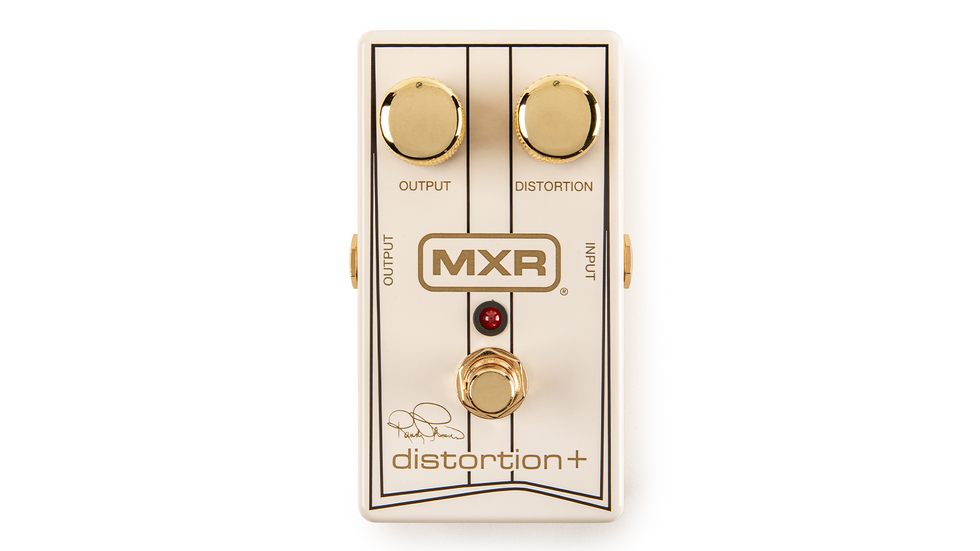
The Randy Rhoads MXR Special Edition Distortion+ features a clean white finish with pinstripe accents, inspired by the iconic Flying V-style guitar that Randy designed after flying on a famous supersonic airliner while touring with Ozzy Osbourne.
Randy Rhoads MXR Special Edition Distortion+ highlights:
- A tribute to the monumental legacy of Randy Rhoads
- Recreates the raw, overdriven tones heard on his most beloved hits
- Painstakingly spec'd from Randy's own MXR Distortion+
- Designed with the direct involvement of sister Kathy Rhoads
- Custom finish inspired by his supersonic V-inspired guitar
- Includes exclusive collector's booklet
Availability
The Randy Rhoads MXR Special Edition Distortion+ is available now at $189.99 street/$271.41 MSRP from your favorite retailer.
SOMA Harvezi Hazze Review
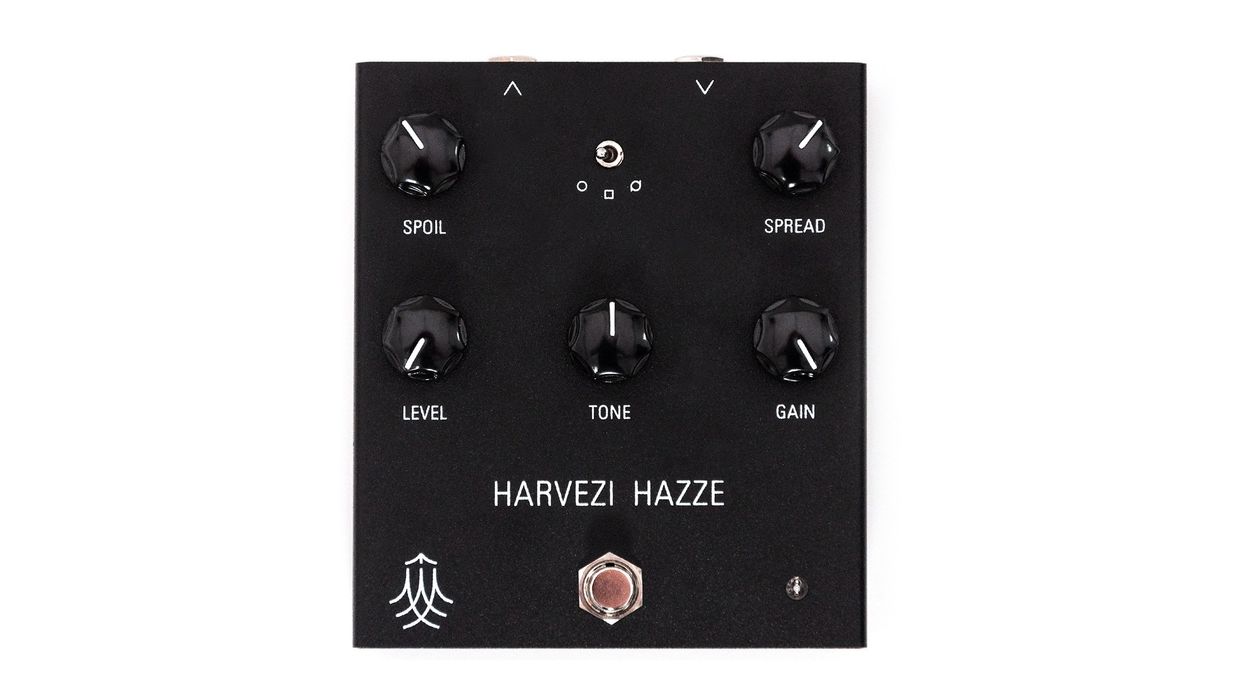
Any distortion pedal with white text on a matte-black finish is going to draw comparisons to Pro Co’s beloved rodent, the RAT, but SOMA Laboratory’s Harvezi Hazze offers a much more versatile brand of distortion. It’s a smartly designed, do-it-all transistor distortion and waveshaper—a function that changes waveforms from, for instance, sine, to square, to triangle, altering the output significantly. Together, the Harvezi Hazze’s circuit and interactive controls summon many unusual tones that go beyond simple distortion.
Spoil Sport
Harvezi Hazze’s three lower knobs—level, tone, and gain—need little description. Up top, though, there’s a switch for selecting from soft-clipping, hard-clipping, or “total feedback mode,” as well as knobs labeled spoil and spread. Spoil sets the amplitude threshold at which the waveshape change takes place, and spread sets the intensity. These two knobs, and the interplay between them, are the beating heart of Harvezi Hazze, and the key to unlocking the most unusual dirt.
A suite of six switches on the side of the enclosure greatly expands the Harvezi Hazze’s palette. From first to last, they activate the tone circuit, boost bass frequencies, change how the tone knob functions, change the central frequency of the tone sweep, cut highs, and engage a preset compressor situated just after the input.
Jams from Georgia
The Harvezi Hazze’s wavehaper is based around unijunction transistors sourced from e-waste bins at flea markets in Tbilisi, the capital of the nation of Georgia. (The pedal’s Georgian name roughly translates to “a fault on the transmission line” or “signal jamming.”) The obscure transistors help the Harvezi Hazze cover tones from gentle distortion mixed with clean signal to warped, sputtering mayhem. In my testing, I discovered so many fascinating, musically pleasing sounds that I was stumped at how they all fit into one dirt pedal. The engineers at SOMA turned an impressive magic trick with this one.
At times when I wanted heavier and dirtier sounds from the Harvezi Hazze I found that tweaking the spoil and spread settings, while altering with the tone knob, can squeeze much more aggressive and volatile sounds from the pedal. There is one drawback to all this versatility: Because the controls are all so interactive, small adjustments can leave you wondering where one sound went and how you arrived at the latest one, and the lack of presets means you’ll be taking lots of photos of your settings if you want to revisit them.
The Verdict
$336 for a distortion pedal is a big ask, but in terms of flexibility and range of possible sounds, Harvezi Hazze is up there with the most deeply featured distortion units on the market, and there are boutique offerings in this price bracket that deliver a tenth of what this pedal can accomplish. In the studio, you could track 10 different guitar parts with totally unique sonic fingerprints, all with the Harvezi Hazze. For the right players and producers, this pedal could be a one-stop tone shop, and a studio staple.
Introducing the LYRA: Two Legends. One Amplifier.
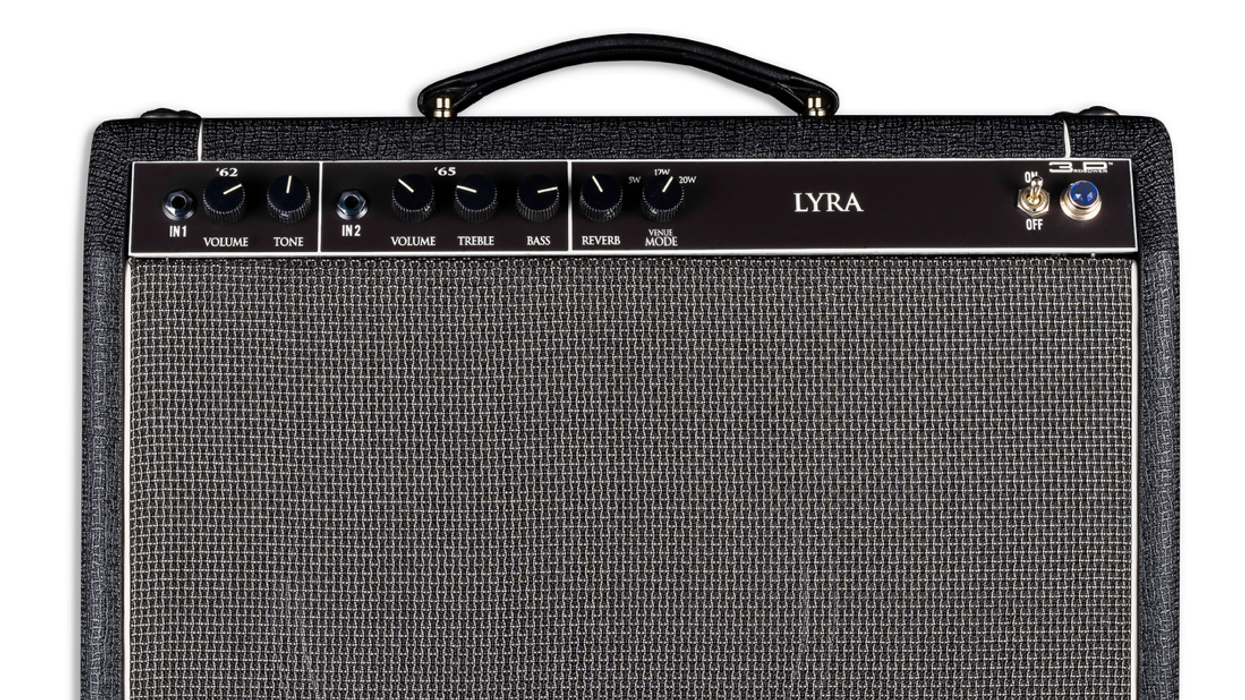
3RD POWER unveils the LYRA, a handcrafted tube amplifier that unites the voices of two of the most iconic amps ever made—the 1962 Deluxe and the 1965 Deluxe—in a single, elegantly designed package available in head format as well as 112 combo.
Built for players who demand authentic tone and uncompromising versatility, the LYRA allows guitarists to step seamlessly between the warm, raw character of the early ‘60s and the refined clarity of the mid-’60s.
With meticulous attention to detail, premium components, and vintage-inspired craftsmanship, this amp captures the soul of two eras while offering modern reliability and transportability. In use, each signal path is pure tube, focussed and effortless. Plug into either channel, or access them both with your favorite AB-Y pedal, and it feels alive - responsive to every touch, every note, as well as every silence. Tube driven spring reverb and our patented VenueMode attenuator are built in and round out the features.
"The LYRA is about honoring history while inspiring new sounds," says amp designer, Dylana Scott. “On stage or in the studio, it’s like having two timeless classics by your side,—ready at the flick of a switch."
The LYRA is now available in limited release.
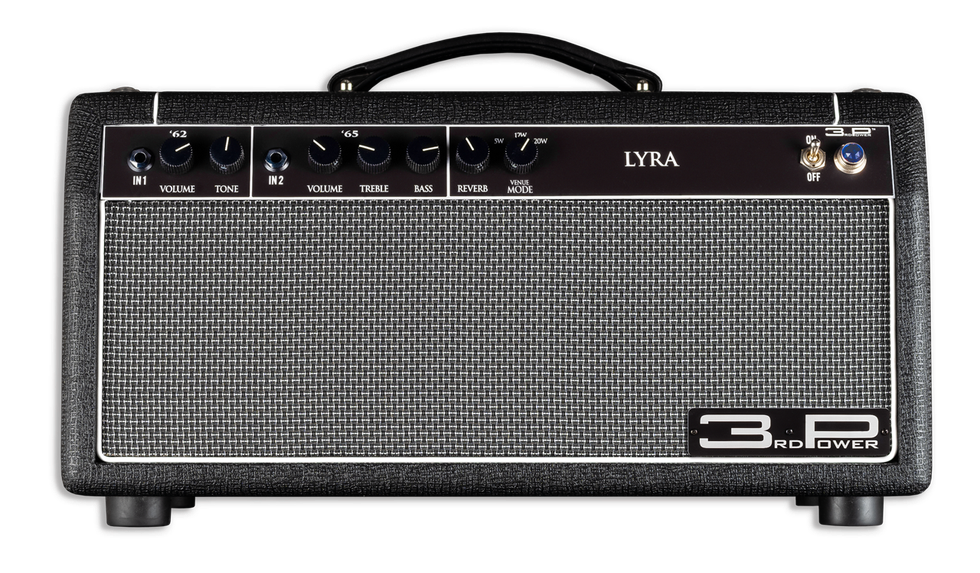
LYRA Features:
- Head or 112 Combo Versions Available
- ’62 DELUXE Voice on Channel One
- ’65 DELUXE Voice on Channel Two
- Tube driven Spring Reverb on board
- Dual 6V6 Power Tubes
- Patented VenueMode™ Built-in Attenuator (20W/12W/5W modes)
- Custom Wound USA-made Power & Output Transformers by Heyboer
- Hand-wired and Hand Built in Minneapolis, MN
- Limited Lifetime Warranty
Pricing for LYRA is around $2799 (head version) and $3299 (112 combo). For more information, please visit www.3rdPower.com.
Tonewood Teardown: How Good Can a Cheap Guitar Sound?
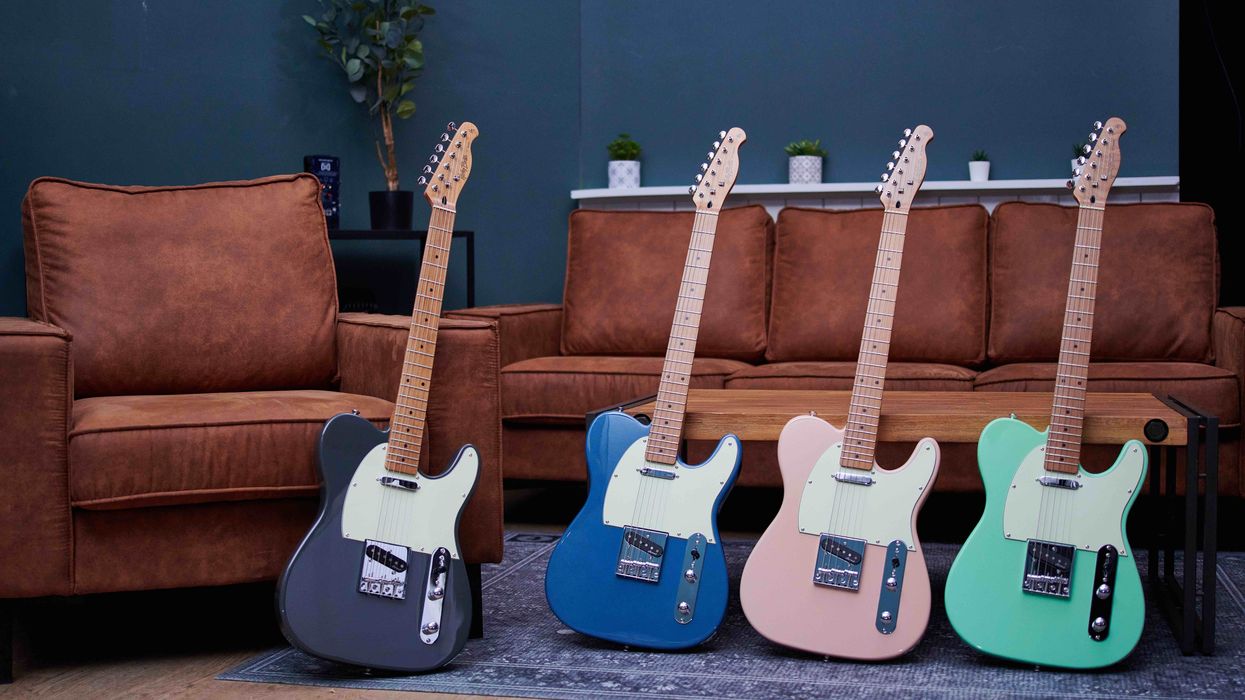
Hello, and welcome back to Mod Garage. This month, we will start our custom-shop experiment with a very cheap electric guitar and see how far we can push it, customizing each and every little detail to see if the wood is really important regarding the amplified tone of an electric guitar.
Basically, we will be putting high-quality parts into an extremely cheap guitar to see what will happen. The idea behind it is very simple: If the wood plays a major role in the amplified tone of an electric guitar, our cheap guinea pig can’t sound any good, no matter what we do. However, if it’s really all about the pickups, electronics, internal wires, guitar cable, strings, and, of course, the individual playing style, the cheap guitar has the potential to sound fantastic. (Another interesting experiment would be to put cheap pickups, electronics, wires, etcetera, into a high-end custom shop electric guitar, and see what happens!)
“This is the perfect guinea pig for our experiment because it sports a lot of features that are considered ‘bad’ for the tone of a guitar.”
You may remember the thesis from the last issue: The more solid an electric guitar is built, the less influence its primary structure has on the amplified tone. So to get this challenge started, I decided to use a Telecaster-style guitar, thanks to its very solid construction. I got a Harley Benton TE-62CC model from Thomann for $148 including shipping. It was delivered in a nice vintage seafoam green color. That’s a complete guitar for less than the price of a good pickup set, so what can we expect from it? It was important for me that the guitar wasn’t pre-selected, so I asked for a randomly picked instrument out of the pile, with the stipulation to not open the box and send it directly to someone else rather than to me so you can be sure I had no chance to do any work on this guitar. A big shout-out to Benedikt from Harley Benton to make all this happen.
The guitar was shipped directly to my friend and colleague Haiko Heinz, who is not only a professional guitarist and teacher but also a renowned gear tester and columnist for the German online mag Bonedo. Haiko runs his own gear-review channel and has made countless gear-testing videos, so you can be sure that over the years he’s had his hands on virtually everything with 6 strings. I asked Haiko if he would make a “before video” of the guitar and he agreed; you can watch Haiko playing the guitar here. (After my work is done, I will ship the guitar back to Haiko and he will make another video to compare it with the stock factory condition.)

After finishing the first video, Haiko sent the guitar to me, and I have to say that, considering the price, I was really impressed with the quality. It’s a standard vintage-flavored Telecaster, and the plan is to completely take it apart down to the last screw, analyse each and every little detail, and transform it into a much better guitar in terms of playability, comfortability, longevity, appearance, and, of course, tone. My goal is to keep the budget under $500, including the guitar, so I’ll be using a mix of new and used parts for our remaining $352. Let’s see how far we can get with this.
The entire procedure is not set in stone. It’s just one possible way to do such a project, and certainly not the only way. I want to keep it as transparent and easy as possible so you can follow along, step-by-step, if you have a guitar you want to spruce up.
So what can we expect from a guitar at this price? We can be sure that we’ll find some flaws and signs of cost-cutting under the high-gloss hood. This is the perfect guinea pig for our experiment because it sports a lot of features that are considered “bad” for the tone of a guitar. Here are the most prominent of them; we will talk about all of these in detail during this series.
• The body is made out of basswood, which is not a classic tonewood.
• The body is made out of multiple pieces of wood.
• The body is not nitro lacquered but has an ultra-thick polyurethane finish, which we all know is killing tone because the wood of the guitar can’t breathe and resonate freely.
• The “1-piece” maple neck is not one piece and has a glued-on maple fretboard, which is not vintage correct, and lessens high-end and attack.
• The guitar is really lightweight so it’s not very loud and doesn’t sustain well.
• It comes with thin strings which have less sustain and thinner tone.
We can’t change the primary construction of the guitar (i.e. the wood used for its body and neck), so through the course of our mods we’ll see how much these things matter to a guitar’s tone. I’ll even install some lighter-gauge strings to really start from the lowest possible point tonewise—at least, according to Common Internet Guitar Knowledge (CIGK).
After playing the guitar for a while and thinking about what to do with it, I decided to transform it into a single-pickup Esquire-style model, because less is often more. We will talk about the differences between a 2-pickup Telecaster and a single-pickup Esquire in detail and you will see it’s not the same tonewise.
If you’re following along with one of your own guitars, your exercise for this month is to completely take it apart. I will do the same with my Harley Benton so we have the same starting point.
Next month, we will start to work on the guitar, defining what to do and making some plans on how to proceed. The custom-shop game is open now, so stay tuned!
Until then ... keep on modding!
BEST of Rig Rundown: Psych-Rock Pedalboards
Experience a sprawling collection of fuzz, delay, and modulation pedals that fuel massive walls of Pscyh-Rock sound. From vintage fuzz faces to boutique builds and custom creations, look back at classic Rig Rundowns from The Flaming Lips, All Them Witches, Elder, King Gizzard & The Lizard Wizard, and more.
New BzzzzKill Device Solves Stratocaster 60Hz Hum Problem
The newly launched company BzzzzKill has introduced its debut product: a specially designed coil that drastically reduces hum in Stratocaster-style guitars.
BzzzzKill solves a problem that has plagued Strat players for more than 70 years: single-coil pickup noise. The new BzzzzKill hum reduction device virtually eliminates Stratocaster 60 cycle hum without noticeable tone loss or permanent modifications to your guitar and its pickups.
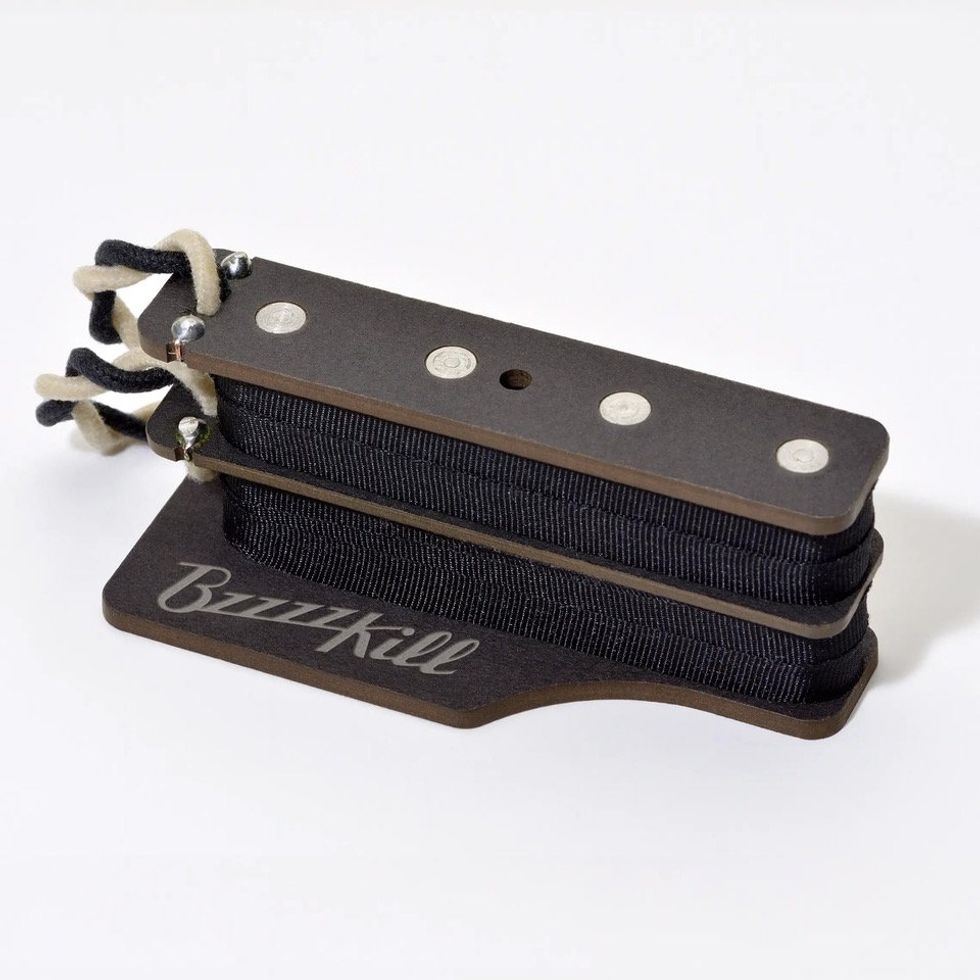
Unlike other solutions that require pickup replacements, permanent alterations, or external power sources, BzzzzKill employs a meticulously engineered passive dummy coil that installs inside your guitar’s control cavity without drilling.
On most Strat-style guitars, the installation process is straightforward and easily reversible, with no need for batteries, routing, or new pickups. Simply remove your pickguard, place the BzzzzKill coil next to the pickup selector switch, solder its wires to a few existing solder connections, and you'll immediately hear a dramatic Improvement. Single-coil 60 Hz hum is virtually gone and your tone is retained.
BzzzzKill’s design finds the optimum balance between hum reduction and tone preservation. It’s currently available in two models. A Dual Layer model is specifically optimized for Stratocasters with reverse-wound/reverse-polarity (RWRP) middle coils. A Single Layer model is designed for vintage-style SSS (single-single-single) pickup configurations.
The innovative solution operates as a passive device requiring no batteries or maintenance, working in all pickup switch positions and remaining compatible with effects chains. The device maintains the guitar’s original dynamic range and low-end response while virtually eliminating hum at all gain levels except maximum gain settings, where only minimal hum remains.
BzzzzKill is the culmination of decades of research and development by inventor Richard Moreton of RSM Custom Guitar Works. “I created over 200 prototypes in perfecting the BzzzzKill, mostly to solve my own quest for great tone and the ideal combination of hum reduction, and tone preservation,” says Moreton. “What started as a personal mission to get rid of the buzz in my own Strats became an obsession to create something that didn’t exist — one-and-done noise reduction without the compromises other solutions demand.”
Current BzzzzKill models sell for $199 USD for both the Single Layer and Dual Layer configurations. The company plans to expand to Telecaster and other single-coil models in the future. For more information visit www.bzzzzkill.com.
Boss RT-2 Rotary Ensemble Review
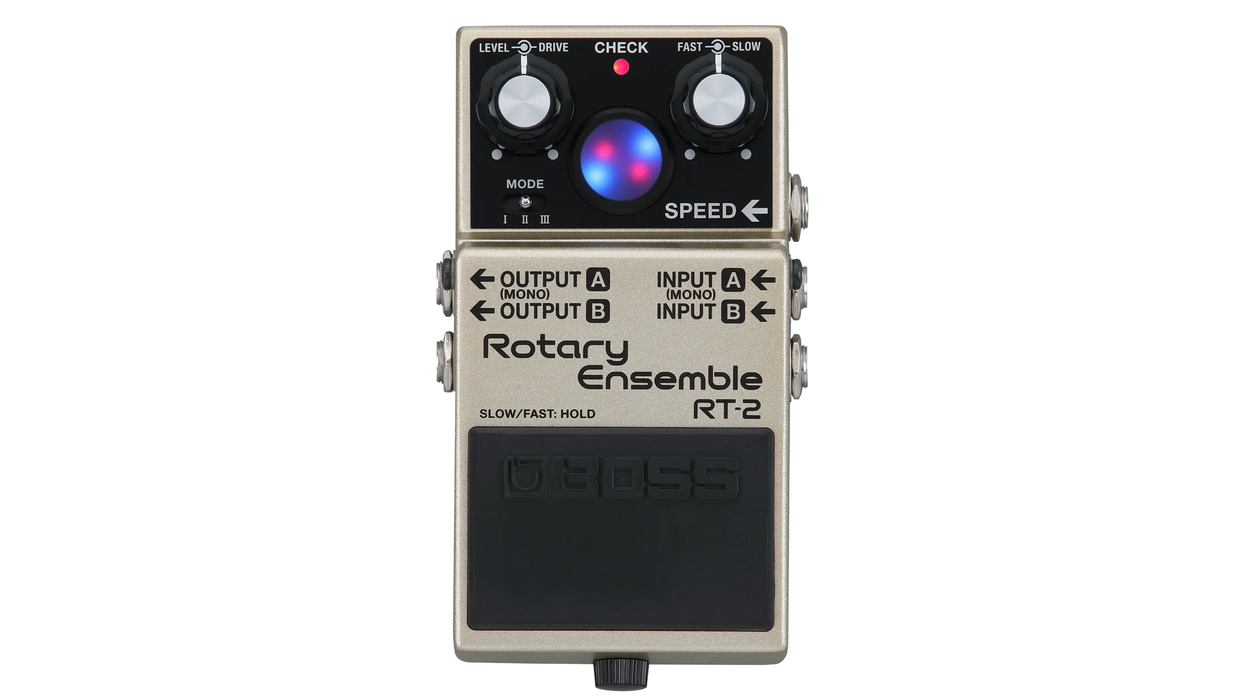
Ours is a frantically paced world. So, I quite like instruments and effects that slow my roll. Delays, reverb, and tremolo all do the trick nicely. But rotary-speaker-type effects can be every bit as good at slowing frantic, frenzied picking to a molasses pace.
Whether a rotary-style pedal “spins” at a slow rate or a fast one … it’s all a lullaby to me. To truly distort time and have a decelerative influence, though, a rotary effect must create a real sense of depth. Boss’ RT-2 Rotary Ensemble possesses this kind of dimensionality in abundance. It’s syrupy and complex. And while it lacks some of the features that distinguish more embellished, contemporary rotary, vibrato, or Uni-Vibe-style pedals, the Boss’ smartly streamlined controls deliver subdued or in-your-face modulations in many shades, with functionality that doesn’t distract.
Ode to Rotation
Though the RT-2 is, in many respects, a more compact riff on the Boss’ RT-20, which was discontinued in 2019, it isn’t as simple as it looks from five paces. The two knobs on the pedal’s face are actually four controls made up of two concentrically stacked dials. Two of the knobs set the speeds you move between when you press and hold the soft-latch pedal. The other two set the effect output level (which is handy for backgrounding or foregrounding the effect) and a drive circuit that approximates tube amp drive in a real rotary speaker. The drive control, though, can also be repurposed as a balance between virtual bass and treble “horns” when you slide a switch on the pedal’s crown. A second switch on the crown selects fast and slow ramp times between two rotary speeds.
A third “mode” switch moves between three distinct effect voicings. The first, in Boss’s description, approximates the frequency response of a Leslie 122. To my ear it is the most open and neutral of the three. Mode II is described as having a wider tonal range more suited to drive and distortion. It’s much more focused in the midrange and slices like a machete when paired with a gain device or overdriven amp. Mode III is flat-out dirty, and while it sounds cool with distortion, it’s useful for achieving radical tone shifts in rigs with fewer effects. A lot of Hendrix and Gilmour fans will spend time here. The footswitch, in addition to functioning as the bypass, and the ramp switch can be reconfigured in different ways. Most notably, it can be used to activate the slowest rate of rotation first, or vice versa.
Sundae Swirl
Though some expensive, dedicated rotary speaker simulators may be better at achieving the mechanically derived, microtonal nuances of a real Leslie or Fender Vibratone, the RT-2 nails the mood and basic richness of the genuine article. The modulation pulses are distinctly hazy around the edges in a way a Uni-Vibe pedal or standard vibrato is not. At the slowest rates, these modulations can serve as a simple thickening agent in a fashion that almost mimics light boost or compression, particularly when the effect level is set to conservative zones. Faster modulations are more overtly rotary-like. Pitch shifts are less binary and bouncy and instead seem to melt into one another. And in a recorded mix with an appropriate sense of room ambience, you’d probably be hard-pressed to discern the RT-2 from a real Leslie.
Though the drive control is effective for adding attitude and color to modulations, I derived a lot more utility and fun from using the control in its balance capacity. The ability to mix the virtual high and bass horns—effectively mimicking the microphone placement and mix emphasis when recording the treble and bass horns on a real Leslie—enables surgical placement of the effect in a mix. But it also helps summon the RT-2’s most natural and realistic rotary tones, and it’s the control I tinkered with most when exploring the pedal’s range.
Accurately simulating a real rotary speaker remains one of the trickier feats in pedal design. Not coincidentally, the best simulators are pretty pricey. And while the RT-2’s $239 price tag can give pause, the pedal’s combination of no-fuss functionality, compact size, and often very delicious, convincing, and ecstatically elastic and animated approximations of a mechanical Leslie make crossing the $200 threshold a much more palatable proposition. And I’d venture that once you are fully immersed in the RT-2’s textures, and the surprisingly numerous, even unconventional, ways they can be applied, this well-executed pedal will pay back the investment many times over.
Alex Lifeson in the Limelight
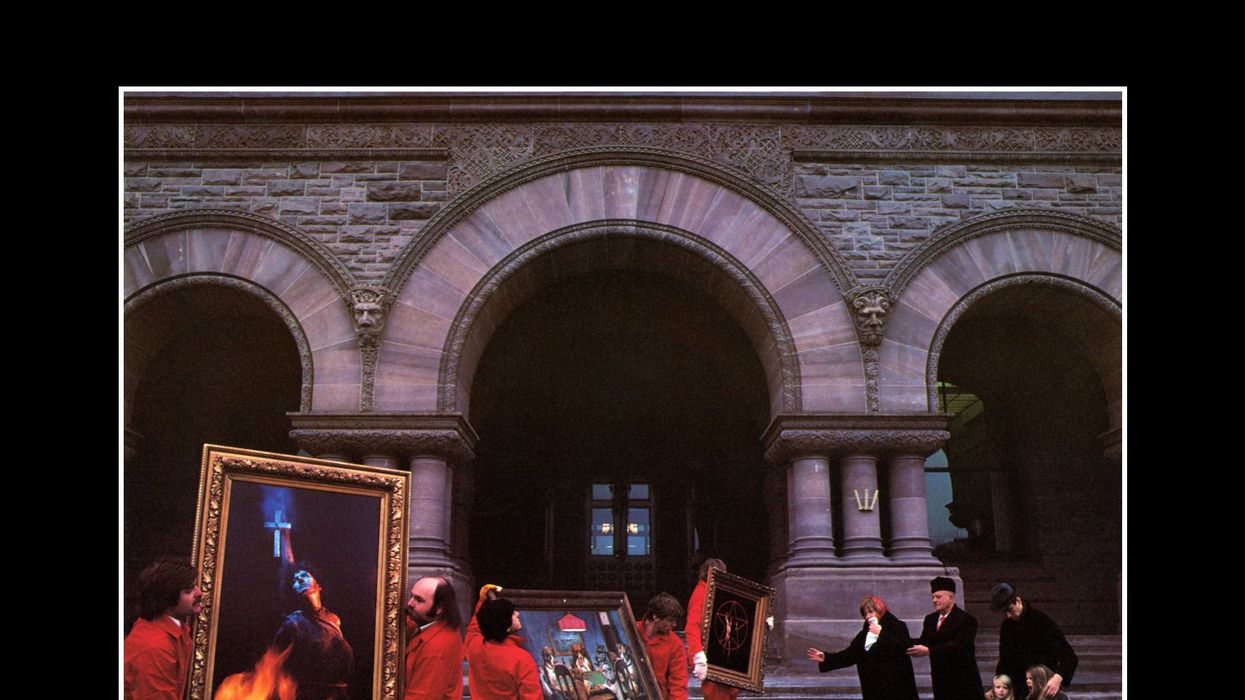
Who could forget Alex Lifeson’s soul-stirring acceptance speech at the band’s 2013 induction to the Rock and Roll Hall of Fame:
Yes, Rush are a “progressive rock band,” with all the weighty importance that it brings, but at their core is a sense of humor that allows them to not take themselves too seriously. The result is that, while their music may be complex at times, overall, it lacks the pretense and self-importance that can permeate bands of the genre.
Along with with late drummer Neil Peart’s masterful drumming and Geddy Lee’s vocals and powerfully melodic bass lines, it is Lifeson’s striking versatility that has made Rush one of rock’s most unique and compelling musical triangles for over 40 years:
Combining vast arrays of chiming chords …
and more, Lifeson’s inspiring creativity and musical savvy quickly become apparent to listeners. Let’s journey through some of the Canadian trio’s most classic songs to see if we can figure out just what makes him tick.
Open Strings Are Our Friends
In the debut episode of Premier Guitar’s Shred With Shifty, affable host and Foo Fighters guitarist Chris Shiflett, together with Lifeson himself, break down the latter’s solo from “Limelight,” off of 1981’s Moving Pictures. It kicks off with a clever use of a simple open B string, as shown in Ex. 1.
Ex. 1
As Lifeson explains, he doesn’t pick the harmonic. Instead, he lightly taps the ringing open string with a fret-hand finger at the indicated fret. (Lifeson uses his index; Shiflett, his middle.) Interestingly, the open B string wends its way through much of the song, including its trance-inducing chorus. Ex. 2 is inspired by this stirring section; note how the open B string acts as a hypnotic drone through all of the chords, a signature Lifeson move.
Ex. 2
You can take many open-position chord forms and experiment with moving them up the neck, while letting any open strings ring. Sure, you’ll inevitably hit some clunkers, but a good rule of thumb is, if the open string is in the key, you’ve got a good chance of finding some magic. Lifeson does just that in the intro to “La Villa Strangiato” from 1978’s epic, Hemispheres, as he positions a standard open G chord up at the 8th fret, creating a unique Cadd2 voicing.
Ex. 3 is along the same lines; note how there are two open strings, D and G, that, when added to this very basic chord form, revitalize it to swirling effect.
Ex. 3
As in the “Limelight” solo, Lifeson cleverly weaves the open B string into his “YYZ” solo, Moving Pictures’ bombastic instrumental. Here, though, he employs it as a pedal point, a re-articulated or sustained note generally played below (or sometimes above) an accompanying melodic figure. Ex. 4 closes out his sinewy solo in grand fashion.
Ex. 4
Only the very first note is picked; the rest are sounded by a series of hammer-ons and pull-offs, which require some fret-hand strength to execute. A great exercise is to take the same figure and move it to other open strings, which is also a fun way to learn your scales horizontally across the neck. Throughout his solo, Lifeson employs B Phrygian dominant mode (B–C–D#–E–F#–G–A), which is simply the 5th mode of E harmonic minor (E–F#–G–A–B–C–D#). Fear not, all this means is that it’s the very same E harmonic minor scale, but here, B acts as the root or tonal center instead of E. Examples 5 and 6 apply this scale to the 1st and 3rd strings, respectively.
Ex. 5
Ex. 6
Familiar Chords in Unfamiliar Places
Just as how Lifeson uses open-position chord shapes up the neck with open strings, he also is adept at taking closed triad shapes (no open strings) and cleverly moving them in similar fashion. His solo in “Subdivisions,” from 1982’s Signals, rises to a climactic end this way, as shown in Ex. 7.
Ex. 7
This familiar “D” shape is one of three triad shapes found on each of the guitar’s sets of three strings. In other words, the same three notes (we’re excluding the open 4th string from the previous example) can be rearranged to find two other inversions along the neck. Let’s use them to play the same “Subdivisions” chord progression, but in different registers of the neck, as in Examples 8 and 9. Note in bar 2 of each how the new shapes lend themselves to different melodic choices and thus, new chord colors.
Ex. 8
Ex. 9
Navigating Odd Spaces
The previous examples contain some interesting rhythms, something for which Rush is well-known, which includes the use of odd time signatures. Ex. 10 is reminiscent of a chordal interlude in “Jacob’s Ladder” from 1980’s Permanent Waves. Rush is a band that is exceptional at using odd time signatures in a most musical way, and here, they shrewdly shift from 5/4 to 6/4.
Ex. 10
To become more comfortable navigating these tricky time signatures, count either out loud or in your head while listening to the section. Doing so familiarizes you with how these time signatures feel, which eliminates the need for counting.
Lifeson always sounds effortless when soloing in odd time signatures. A key way to accomplish this is to always be aware of where beat 1 is, so, for the moment, a bit more counting. But this time, do it while actually playing, as this will have you feeling at ease sooner than you might think. Lifeson’s solo in Moving Pictures’ “Red Barchetta” is in 7/4; note that an easy way to count your way through 7/4 is to break it down into 4/4 plus 3/4. Ex. 11 illustrates how he deftly negotiates one of the solo’s two-bar phrases in a memorably melodic way.
Ex. 11
The above is just a taste of the palette of colors from which Lifeson draws, as he weaves his guitars throughout Rush’s timeless catalog of songs. He, along with Lee and Peart, created unique and genuinely emotional music, none of which could ever be described as “blah.”
IK Multimedia Releases the ENGL Ampthology Volume 1Signature Collection for TONEX
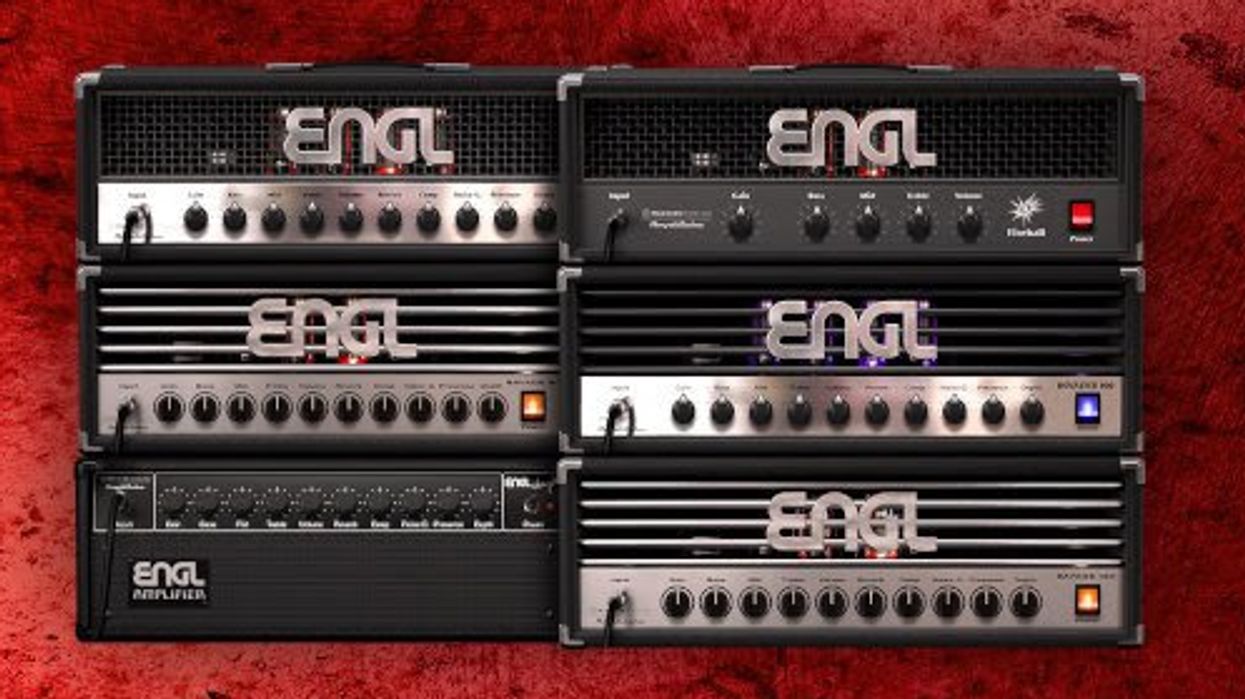
IK Multimedia introduces ENGL Ampthology Vol 1, the first Signature Collection powered by the new TONEX Modeler. ENGL has earned a place among the most revered names in high-gain amplification, with a tone that has shaped the performance of metal, prog, and hard rock around the world.
For the first time, that signature ENGL aggression and clarity have been captured directly from ENGL's private vault of hand‑selected amps, meticulously curated for the official TONEX collection.
"For decades, ENGL has defined the sound of high-gain excellence. With IK Multimedia's TONEX technology, our iconic amps have been captured for you to unleash in the studio, on stage, or anywhere your music takes you."
- Edmund Engl, founder of ENGL AMPS
ENGL Collection Overview
- 72 Tone Models based on six legendary amps from ENGL's private collection, dialed in for this exclusive release.
- Created by ENGL tone masters using TONEX Modeler for enhanced high‑gain precision.
- Includes Amp, Amp + Cab, and Complex Rig Tone Models for ultimate flexibility in studio and live setups.
- Compatible across the entire TONEX ecosystem: Mac/PC, iOS, TONEX Pedal, and TONEX ONE.
- Compatible with all TONEX software versions, including the free TONEX CS.
The Ultimate ENGL Experience
ENGL Ampthology Vol 1 offers instant access to six legendary ENGL amplifiers: the Fireball 60, Powerball MK1, Invader 100, Savage 120 MK1, Savage 60 MK1, and the pure tube tone of the ENGL Straight. Each amplifier offers a selection of exclusive Tone Models, including amp-only captures for maximum versatility.
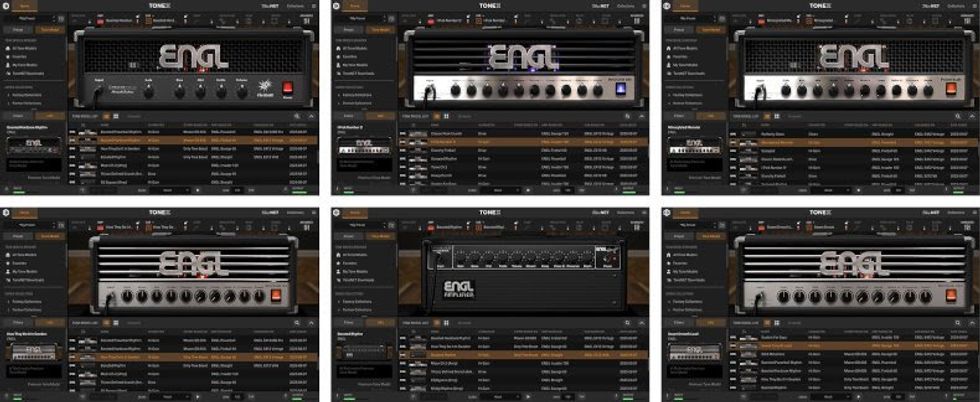
From crystal-clear cleans to crushing high-gain tones, with or without cab, these Tone Models capture authentic ENGL character in a mix-ready, studio-quality format that's phase-perfect, ultra-responsive, and optimized for both studio and live use.
Experience the full ENGL sound - without the volume, weight, or tube maintenance.
Pricing and Availability
The ENGL Ampthology Vol 1 is now available via ToneNET and within any version of TONEX for Mac/PC at a limited-time introductory price of $/€79.99* (reg. $/€99.99).
*Pricing excluding taxes.
For complete details and information about the ENGL Ampthology Vol 1 Signature Collection and to hear the tones, please visit:
www.ikmultimedia.com/tonex-engl-vol1
www.ikmultimedia.com/tonex-engl-vol1/video
Small Amps, BIG Sound: Spark Mini, VF-1, Jupiter 45 & Starlite Reverb
From portable digital powerhouses to vintage-flavored tube tone machines, Premier Guitar contributor Tom Butwin puts four very different low-powered amps through their paces.
If you’re a tinkerer searching for new tonal colors, a traveler who needs great sound in a compact package, or a tone chaser looking for the perfect studio companion, one of these amps has you covered. From quiet practice sessions to mic’d-up gigs, sometimes less really is more.
IK Multimedia Launches the New TONEX Modeler
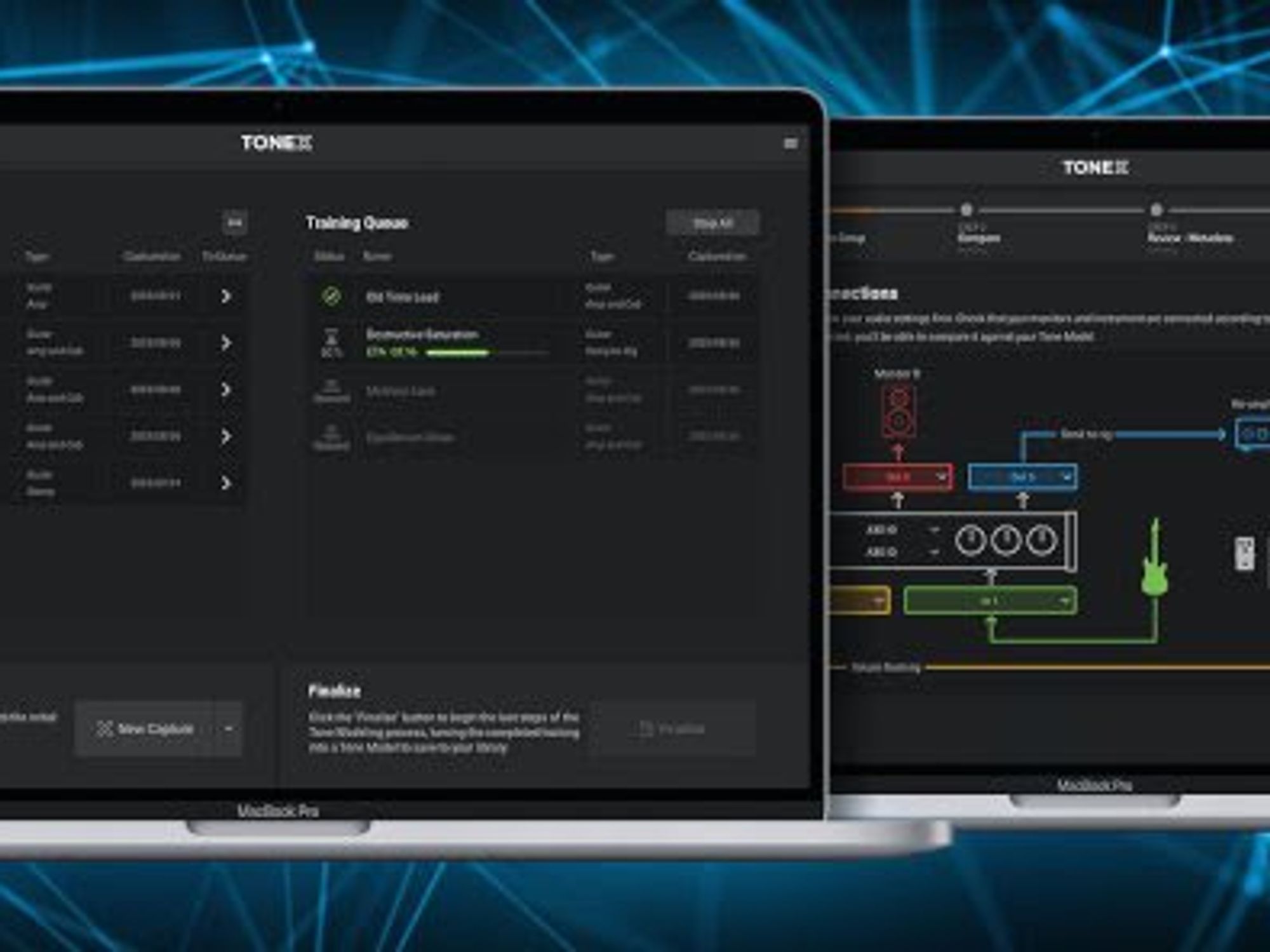
FREE for all TONEX users, the standalone modeler adds batch processing, improves accuracy, increases reliability, and offers dramatically faster training times.
IK Multimedia is proud to announce the launch of the new TONEX Modeler, a FREE update for all paid versions of TONEX, available today through the IK Product Manager as TONEX 1.10.0.
Smarter. Faster. Perfect Tone.
Developed by IK's dedicated TONEX team, TONEX Modeler offers a variety of requested improvements and works seamlessly with TONEX software, ToneNET, and TONEX hardware, whether for capturing and creating Tone Models or performing live with more accurate and expressive Tone Models.
TONEX Modeler Overview
- Faster Training: Up to 87% quicker on modern GPUs and Apple Silicon Macs, with training times as short as 2 minutes.
- Extreme Tone Accuracy: Ultra-dynamic with harmonic clarity for high-gain amps.
- Batch Processing: Capture multiple rigs in a single session, then train later, even on another machine.
- Time-Saving Workflow: TONEX Modeler automatically stops training once the ideal results are achieved.
- Phase-Perfect Captures: Stereo rigs and DI blends remain perfectly aligned, essential for live performance.
- Ultra-Low Latency: Play with a natural, responsive feel both in the studio and on stage.
- Portable & Organized: Archive, export, and transfer captures easily across devices.
- Seamless TONEX Integration: Instantly load new models into TONEX and TONEX Editor.
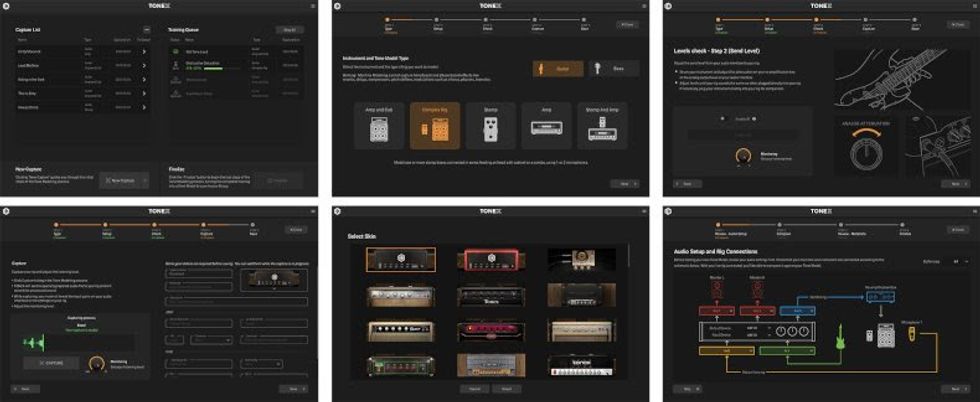
Professional, Unmatched Results
Every Tone Model produced by TONEX Modeler is phase-perfect and features ultra-low latency, ensuring that stereo rigs and bass DI blends sound flawless without requiring additional tweaks. The new capture engine also excels with high-gain tones, delivering tighter lows, richer harmonics, and crystal-clear definition-perfect for modern guitarists and producers who demand mix-ready sound straight from the capture.
Batch Processing for Power Users
TONEX Modeler's batch processing removes guesswork, saves time, and lets users capture once and process anytime, with the heavy lifting done automatically. Designed for today's creators, it works smoothly with NVIDIA GPUs and Apple Silicon Macs, providing faster and more reliable performance. Its smart workflow even stops training early once peak quality is reached, so there's less waiting and more creating.
Tone Partners Onboard
TONEX Tone Partners are experts whose feedback was crucial in developing the new TONEX Modeler. They received early access, and today IK is excited to share the results of this collaboration. Fifty-six new Tone Partner collections and bundles are now available on ToneNET for demo and purchase, showcasing the sonic enhancements of the new TONEX Modeler and providing over 1,140 new Premium Tone Models of sought-after rigs to explore.
Pricing and Availability
The TONEX Modeler is now available through the IK Product Manager as a FREE update for all paid versions of TONEX, including TONEX SE.
TONEX Tone Partner Collections, created with the new TONEX Modeler, are now available for demo and purchase through ToneNET and in any version of TONEX for Mac/PC, starting at just $/€9.99* with Tone Partner bundles beginning at $/€39.99.
How to Mic Acoustic, Electric, or Bass Guitars like a Pro
In this video, PG Contributor Tom Butwin breaks down the fundamentals of mic'ing acoustic, electric, and bass guitars. Learn the best microphone placements to capture the perfect tone, whether you're looking for a bright, aggressive sound or a warm, vintage vibe.
Molly Tuttle: Moving Beyond Bluegrass Into Fresh Pop Pastures

Perched on Houston Street, the unofficial border between Manhattan’s East Village and Lower East Side, the Mercury Lounge is a venerable New York City music room with a top-notch sound system. It’s also quite small. Two hundred and fifty people max would be a generous capacity estimate, and the club’s bookings, fittingly, tend toward the alternative and the fringe. So it’s not the first place you’d expect to see a celebrated bluegrass acoustic guitar virtuosa and two-time Grammy winner. But on this extra-warm evening in late June, Molly Tuttle is specializing in the unexpected.
- YouTube
The four musicians weaving through the shoulder-to-shoulder crowd ahead of Tuttle to the Mercury stage are the night’s next surprise, for more than one reason. For starters, they’re not Golden Highway, the group with which she won those Grammys (for Best Bluegrass Album, in 2022 and 2024). Secondly, they’re all female. The appealingly afro’d Megan Jane is a stone-solid drummer. Vanessa McGowan switches off between electric and acoustic upright bass. Mair Mulroney deftly handles fiddle, mandolin and keyboards. Close-cropped Ellen Angelico lets it rip on electric guitar and lap steel. “This is only the fourth show we’ve played together,” Tuttle announces from the stage, clutching the signature dreadnought that Martin built for her last year. “And the first three were festival-type things, so this is the first show that really feels like ours.”
The music they play, much of it from Tuttle’s new album, So Long Little Miss Sunshine, is surprise number three. Bouncy, breezy songs like “The Highway Knows” and “That’s Gonna Leave a Mark” are, in short, not bluegrass, though they abound with nods to both modern and traditional country. You wouldn’t be wrong to call this pop music, yet it’s pop of an exceptionally tuneful, intelligent and tastefully arranged order. And unlike the work of pretty much any other contemporary pop artist, it leaves plenty of room for the acoustic guitar as a lead instrument. Because while the stylistic trappings and the supporting players have changed, one thing hasn’t: Tuttle is still cross-picking up a storm, exclusively on the kinds of axes that have big sound holes and wound G strings. At least for now.
“Maybe on the next album,” 32-year-old Tuttle says with a laugh earlier that same day, in a mercifully air-conditioned record company conference room, when asked about the chances of her ever going electric. Right now she’s still happy to explore her usual instrument in a new context. “You know, you think of bluegrass as featuring the flatpicked guitar more than any other style. But strangely enough, I play so much more guitar on this album than I ever have on one of my records. That was really fun for me, and it pushed me as a player. It was like, how do we keep this interesting when I’m gonna be the only soloist on the whole record?”

“This is my fifth record,” Tuttle says of So Long Little Miss Sunshine, “which is crazy. It doesn’t feel like it is. But looking at all five of them together, this one is definitely more in the vein of my first record [2019’s When You’re Ready] and the cover record. And then for the last two”—the Grammy winners, Crooked Tree (2022) and City of Gold (2023)—“I consciously wanted to make these bluegrass records to honor my family roots in that music. My grandfather played the banjo and passed down the music to my dad, who taught me how to play, and it just felt like this important thing for me to do. I know that I’ll always want to play that music, and I’m sure I’ll make more bluegrass records and tour with bluegrass bands again. But at the same time, this album feels like it’s a bigger picture of who I am as an artist. It encapsulates more sides of my songwriting and playing and singing.”
“Strangely enough, I play so much more guitar on this album than I ever have on one of my records.”
So where does this leave Golden Highway? “It’s on hiatus,” Tuttle responds, “and I don’t know when we’ll play together again. But I certainly hope that we do. I think we were all ready to slow it down a bit. We’ve had so much fun over the past three years, but everyone knew that I was gonna want to do something different. Some of the band members expressed that they wanted to pursue their solo projects, and we’ve been touring at such a high intensity, it just felt like a natural stopping point. I don’t think anyone wanted to say this is the end, and I certainly don’t. We’re all still great friends, I see them around in Nashville, and I think when the time’s right, we’ll have an epic musical reunion.”
Molly Tuttle’s Gear
Road Guitars
Pre-War Guitars Co. Dreadnought (tuned EADGBD)
Martin Molly Tuttle signature model (D-28 style, tuned DADGAD)
Studio and Home Guitars
1943 Martin D-18
Pre-War Herringbone and Double Aught
Preston Thompson D-BA
Preston Thompson Molly Tuttle Signature
Pickups
K&K Double Helix, blended with internally mounted Shure microphone
K&K Pure Mini
L.R. Baggs HiFi Duet
Grace Design FELiX preamp
Strings, Picks & Capos
D’Addario EJ12 80/20 Bronze strings, medium gauge (.013-.056)
Dunlop Jazztone 208 picks
Shubb and Elliott capos
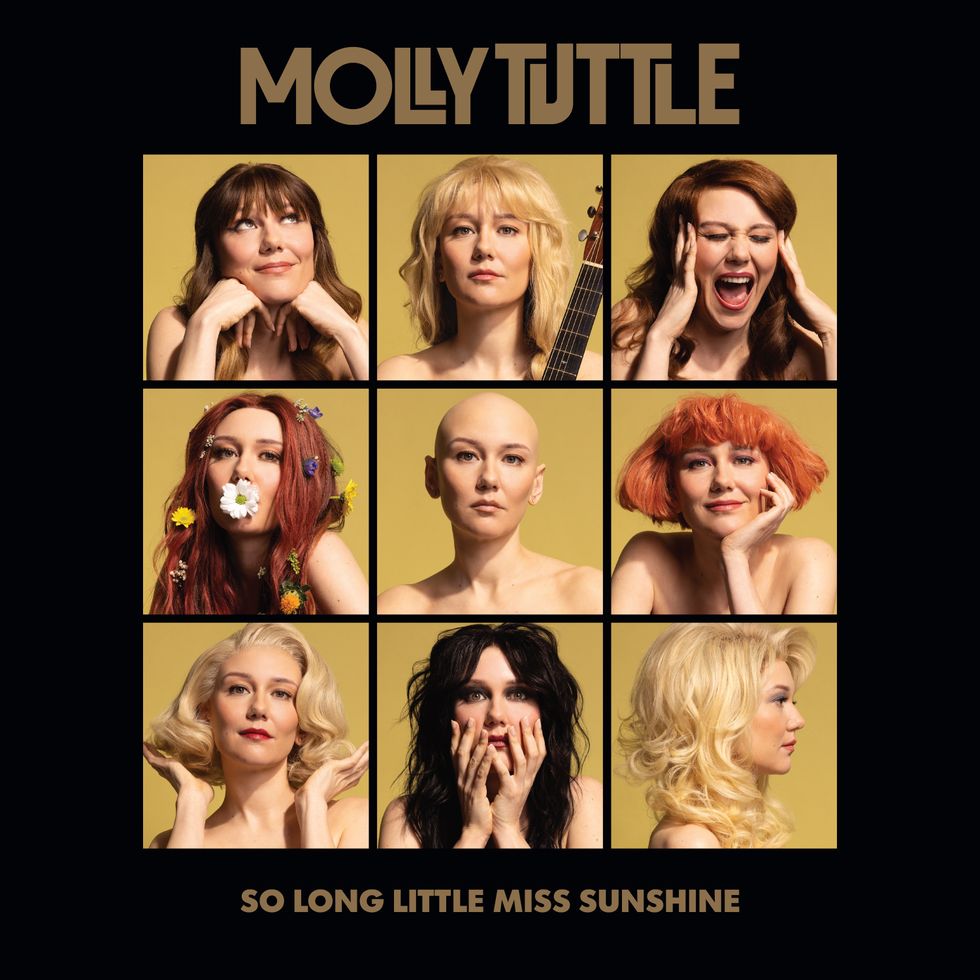
As for the new band, Tuttle claims that the lack of Y chromosomes in its lineup wasn’t pre-planned. “I reached out first to Vanessa, who’s playing bass, and then she connected me with the rest of the band. I’d already toured with Megan, the drummer, in 2021, and we did some pandemic livestreams together. But we didn’t mean to make it all-female. Being a woman in the music industry, you never want to feel like you’re being asked for a gig just because you’re a woman. But when you get together organically, as we did, it’s like, yay, this is pretty fun.” That sense of high spirits is evident at the Mercury Lounge, as Tuttle’s bandmates prove equally adept at both the poppier new material and Golden Highway nuggets like “Alice in the Bluegrass” and “Over the Line.”
“I’m sure I’ll make more bluegrass records and tour with bluegrass bands again.”
Tuttle may not have played any of the electric guitar parts on So Long Little Miss Sunshine (those were handled by Joyce), but in the absence of Golden Highway in the studio, she did make another notable recorded debut: playing her grandfather’s banjo. “I always had a banjo player before,” she explains, “but all of a sudden I had to be my own banjo player. And that was a conscious decision—we still wanted to have banjo [on the album]. That way you see how it connects to my previous work; even as we’re moving into new areas, we tie it back to the roots.”
Beyond serving as a timbral bridge from one Tuttle era to another, the banjo also combines with her acoustic to create alluring textures on the album’s final two songs, “No Regrets” and “Story of My So-Called Life.”
In the latter composition, an exercise in elliptical autobiography, Tuttle gives a shout-out to the Orange Line, a branch of the Boston subway system that she rode almost every day she lived there. Even though she’s been a Nashville resident for years, the time she spent in Massachusetts’ capital as a student was clearly pivotal. “I learned so much at Berklee,” Tuttle recalls. “I knew no music theory before I went there. I’d never read any music or tablature. I had such an aversion to all that. So when I got there, it was a big shock. But after about a year I really understood music more, and I could communicate better with other musicians. A lot of times, I was the only acoustic player in my guitar classes, which was kind of funny. But I learned to embrace that, even if it sometimes made me uncomfortable.”
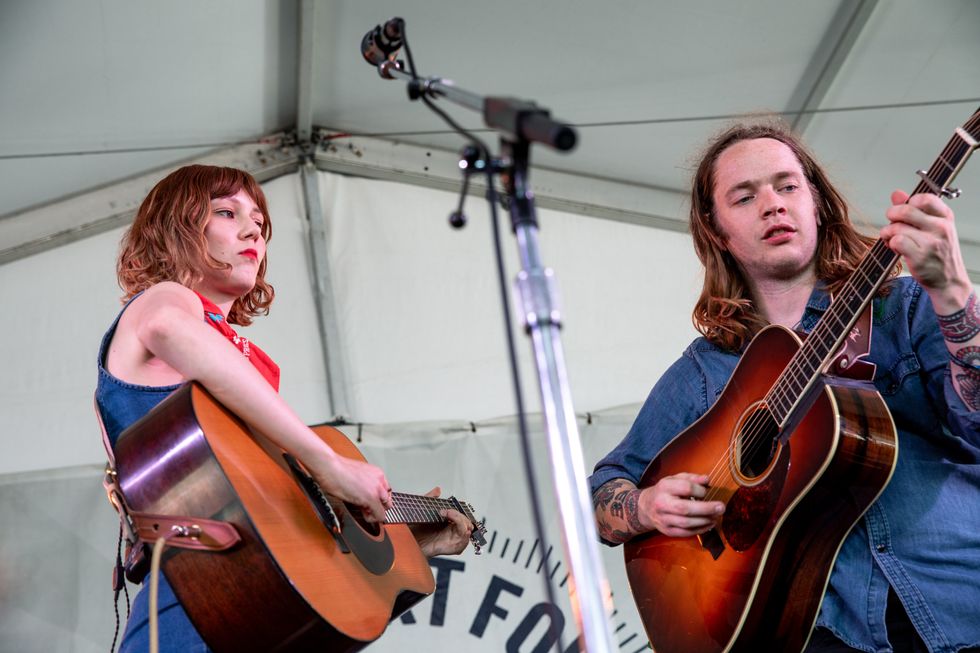
Back at the Mercury Lounge, the surprises keep coming. Toward the end of the set, Tuttle and her band launch into another new tune, “Old Me (New Wig),” with rockabilly swagger. At a climactic moment, Tuttle dramatizes the song’s subtitle by reaching up and removing her carefully coiffed brown wig, revealing a smooth, white pate beneath. What feels on some level like a Sinéad O’Connor-style protest against the patriarchy is also a touching acceptance of reality: Tuttle’s natural hair stopped growing when she was a child due to an autoimmune condition called alopecia universalis. Fans have long known this, but for her to acknowledge it onstage so openly—and play the rest of the show wigless—is further evidence that Tuttle continues to embrace the uncomfortable.
For the last song of the evening, Tuttle plays what feels like her trump card: a radical reworking of Icona Pop and Charli XCX’s “I Love It.” That it’s in the set list isn’t one of tonight’s bigger surprises—it’s a highlight of her new album—but the decision to close with it is bold. Where the original is a snotty dance-punk anthem, Tuttle turns it into something else entirely: a bleak ballad, sung by a woman whose recent romantic breakup may have brought her to the end of her tether. In her hands and voice, a fun pop throwaway becomes strangely moving. It’s a powerful moment, hinting at even more to come.
“I always had a banjo player before, but all of a sudden I had to be my own banjo player.”
“I really liked doing my last two records, the bluegrass ones,” Tuttle says. “That felt so in my wheelhouse. I knew exactly what to do. This one took much longer to figure out: How do I put my own voice on the guitar into this new style of music? And a lot of the songs changed a ton from the way they were when I started writing them.”
She continues, “But now, having these new songs and this new style adds an element that I feel can make the live show bigger and reach more people, which is exciting. And the new band lineup is cool because we can still incorporate the bluegrass stuff too; everyone can play that. For me, it just feels good to branch out artistically.”
YouTube
Molly Tuttle stops into CBS’s Saturday Sessions to play her song “San Joaquin,” from 2023’s City of Gold.
Sweetwater CEO Mike Clem Talks Leadership and Problem-Solving at the Music Retailer
Sweetwater CEO Mike Clem recently stopped by the Know Your Gear podcast for a look inside how one of the largest music gear companies operates.
In the conversation, Clem talks about the ways Sweetwater listens to customers, employees, and the broader market when making decisions. He shares how the company responds to challenges in the industry, from supply chain issues to evolving technology, and how those challenges shape everyday operations.
Clem also touches on leadership and supporting employees in their roles, offering insight into how a large company keeps everyone moving in the same direction without losing sight of its culture. It’s a detailed look behind the scenes, full of takeaways for musicians, gear enthusiasts, and anyone curious about running a growing business in a competitive industry.
You check out the full interview above.
BOSS Introduces PX-1 Plugout FX
BOSS introduces the PX-1 Plugout FX, an innovative hardware platform that captures the timeless BOSS compact pedal experience in one versatile pedal.This convertible stompbox holds multiple authentic effect recreations from the historic BOSS effects lineup, providing endless fuel for every creative journey. Sixteen effects are included with purchase, and more can be added over time with the BOSS Effect Loader app for iOS and Android devices.
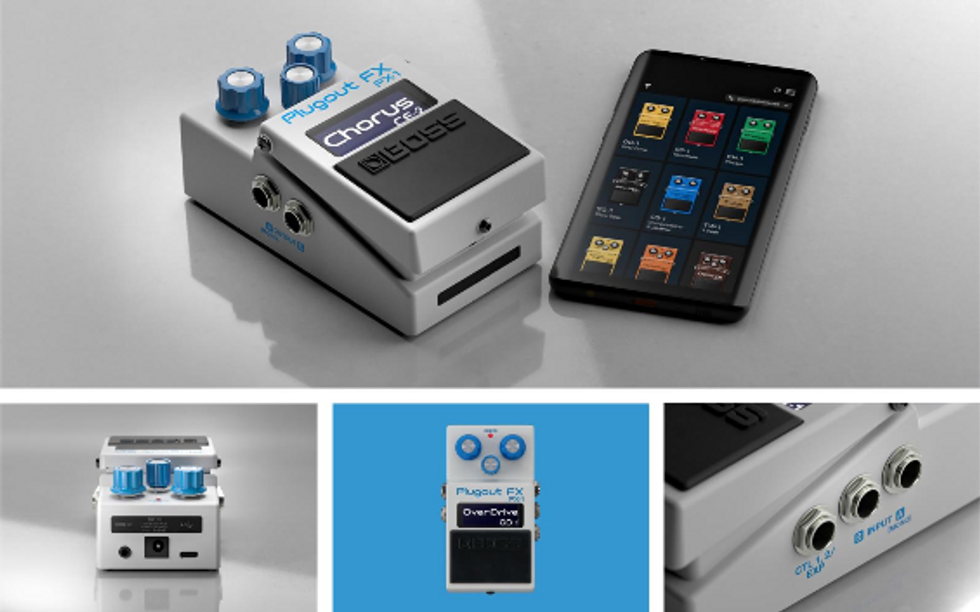
Since 1977, BOSS compact pedals have inspired generations of musicians around the world. Over 140 unique models have been produced, over 19 million units have been sold, and many have remained in non-stop production for decades. From vintage classics and go-to workhorses to rare and specialty effects, the PX-1 unlocks the diverse BOSS compact pedal range within a single stompbox.
Backed by newly developed BOSS algorithms, each effect in the PX-1 delivers the genuine sound and response of the pedal it’s based on. Every detail is modeled with stunning accuracy, thanks to a powerful DSP engine dedicated to recreating the sound of a single effect at a time. Users can dial in tones fast with the familiar BOSS knob interface, supported by an onboard display for current parameters and internal settings.
The PX-1 offers external control with one or two footswitches or an expression pedal. There’s a Swap function to switch between two effects, and nearly any parameter can be assigned for real-time expressive control while performing. Stereo I/O provides flexible connectivity and enhanced sound for models with stereo operation, while tap tempo and MIDI clock support are provided for time-based effects.
An Ever-Expanding Library
The PX-1 comes with 16 unique effects, including eight permanently installed “1” models and eight that can be loaded into the pedal’s eight user memories.Many more PX-1 effects will be added over time, and each new effect will be available with a low-cost Model Pass within the BOSS Effect Loader app.
Included effects:
OD-1 Over Drive
SP-1 Spectrum
PH-1 Phaser
SG-1 Slow Gear
CS-1 Compression Sustainer
TW-1 T Wah
SD-1 SUPER OverDrive
DS-1 Distortion
CE-2 Chorus
BF-2 Flanger
PN-2 Tremolo/Pan
OC-2 Octave
PS-2 Digital Pitch Shifter/Delay
VB-2 Vibrato
DD-2 Digital Delay
DF-2 SUPER Feedbacker & Distortion
Roland Cloud Ultimate Membership Included
The same PX-1 effects are also available for computer music production with the BOSS Effects Pedals plug-in on Roland Cloud, and six months of Roland Cloud Ultimate membership comes with the pedal. This provides complete access to the full BOSS Effects Pedals library, JC-120 Jazz Chorus and RE-201 Space Echo plug-ins, and many other powerful creative tools.
Availability & Pricing
The BOSS PX-1 Plugout FX will be available in September for $249.99 USD.
Many more PX-1 effects will be added over time, and each new effect will be available with a low-cost Model Pass within the BOSS Effect Loader app.
Bad Cat Introduces the Ocelot — Small Amp. Big Attitude. Total Control.
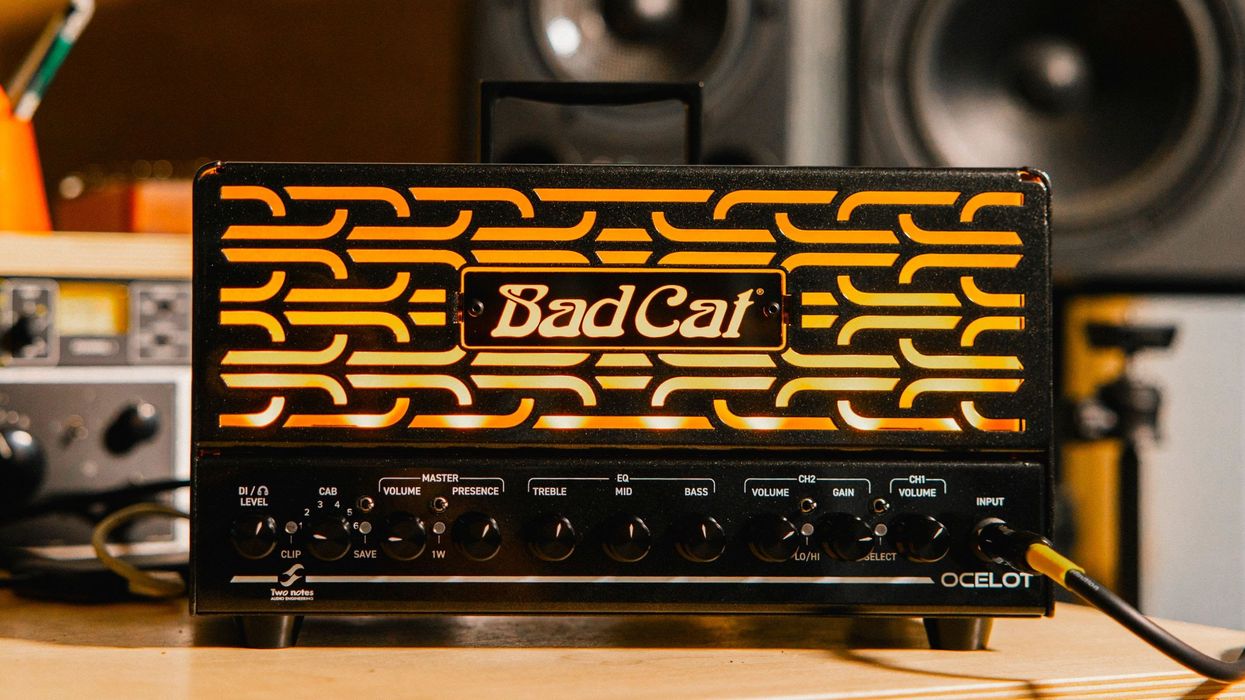
Bad Cat Amplifiers is proud to announce the release of the Bad Cat Ocelot, an all-new compact tube amplifier designed for modern players who demand premium tone, total flexibility, and uncompromising quality—in a small 12 lbs. package.
The Ocelot brings together the warmth of pure analog tube circuitry with advanced digital features, redefining what’s possible in a small-format amp. Whether you're recording at home, gigging, or practicing silently with headphones, the Ocelot adapts to your environment without ever compromising your tone.
Compact Size, Massive Flexibility
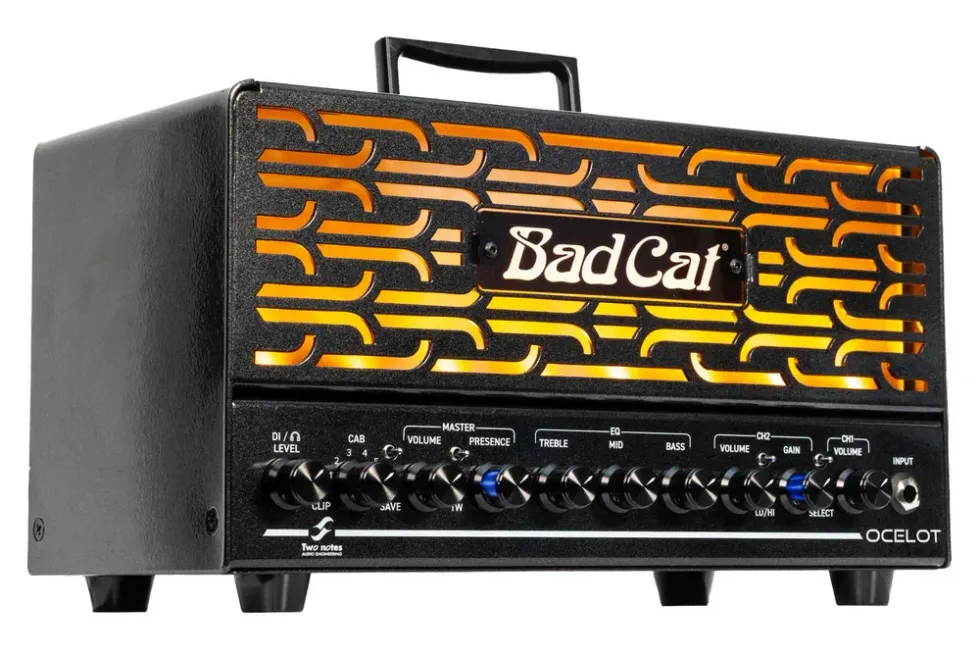
Equipped with two independent channels and two distinct gain modes, the Ocelot delivers a wide sonic spectrum:
- Channel 1 features sparkling, high-headroom cleans with the ability to nudge into rich edge-of-breakup tones via a Hi/Lo mode switch.
- Channel 2 brings tight, punchy crunch and full-bodied, high-gain saturation—with articulate response and massive sustain.
Each channel has its own volume control, and the amp includes shared Treble, Mid, Bass, and Presence EQ for easy tone shaping.
Studio-Ready Features, Stage-Proven Design
The Ocelot’s real power lies in its flexibility:
- Two notes Torpedo DynIR™ integration with six onboard virtual cabinet presets from the official Bad Cat DynIR Pack.
- Selectable Power Modes – Choose between 20W for full punch or 1W for quiet playing.
- XLR and Headphone Outs – For silent practice or direct-to-DAW recording, complete with Cab Sim and adjustable Cab Level control.
- Buffered Effects Loop – Keep your pedals sounding pristine and punchy.
- USB-C Port – For firmware updates and remote editing via Two notes Torpedo Remote software.
- MIDI Control – Full MIDI implementation for switching channels, modes, and cab presets on the fly.
And thanks to its internal speaker load, you can use the Ocelot without an external cabinet—perfect for late-night jams or tracking in a silent setup.
Built for Real Life
Crafted with a heavy-duty aluminum chassis and powered by a custom Bad Cat transformer set, the Ocelot is a rugged, reliable, and road-ready package. It includes a two-button footswitch and is backed by Bad Cat’s 5-year limited warranty.
Specifications
- Designed in the USA by Bad Cat Amps
- 20 Watts, switchable to 1 Watt
- 2 x EL84 Power Tubes
- 3 x 12AX7 Preamp Tubes
- Two Channels with Hi/Lo Mode
- Treble, Mid, Bass, and Presence Controls
- Master Volume
- Two notes Torpedo DynIR Integration (6 presets)
- Cabinet Simulated XLR Output
- Cabinet Simulated Headphone Output
- MIDI Input
- Buffered Effects Loop
- 8, 16 Ohm Speaker Outs
- Heavy Duty Aluminum Chassis
- USB-C Connectivity
- Footswitch Included
- 5-Year Limited Warranty
- Street Price: $1,299.99
The Bad Cat Ocelot: Go anywhere. Play anything. Available August 28, 2025.
For more information or to place an order, visit www.badcatamps.com
GEAR Finds: Stompboxes
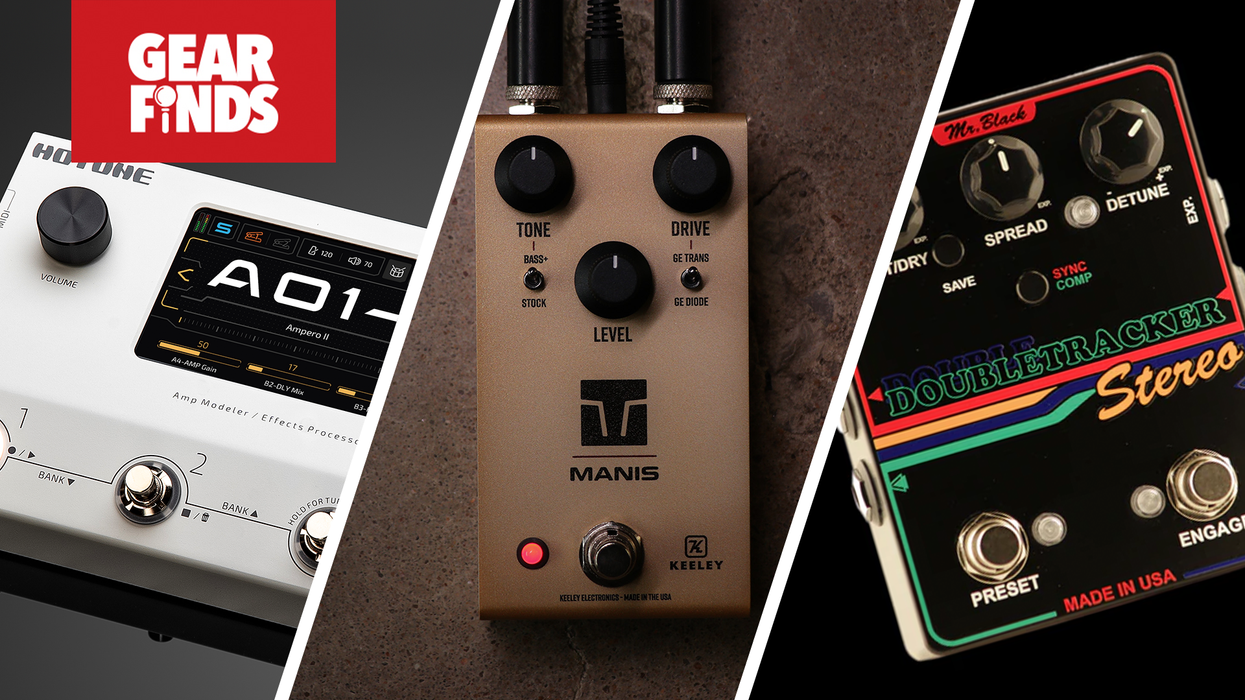
Discover the magic of tone with the latest pedals! From the versatile Brothers AM to the warm Keeley Manis Overdrive, each offers unique sonic possibilities. Ready to elevate your sound? Dive into the Eventide H90's powerhouse effects or the compact CHO-mini's rich chorus. Which pedal will inspire your next masterpiece?
CHASE BLISS Brothers AM
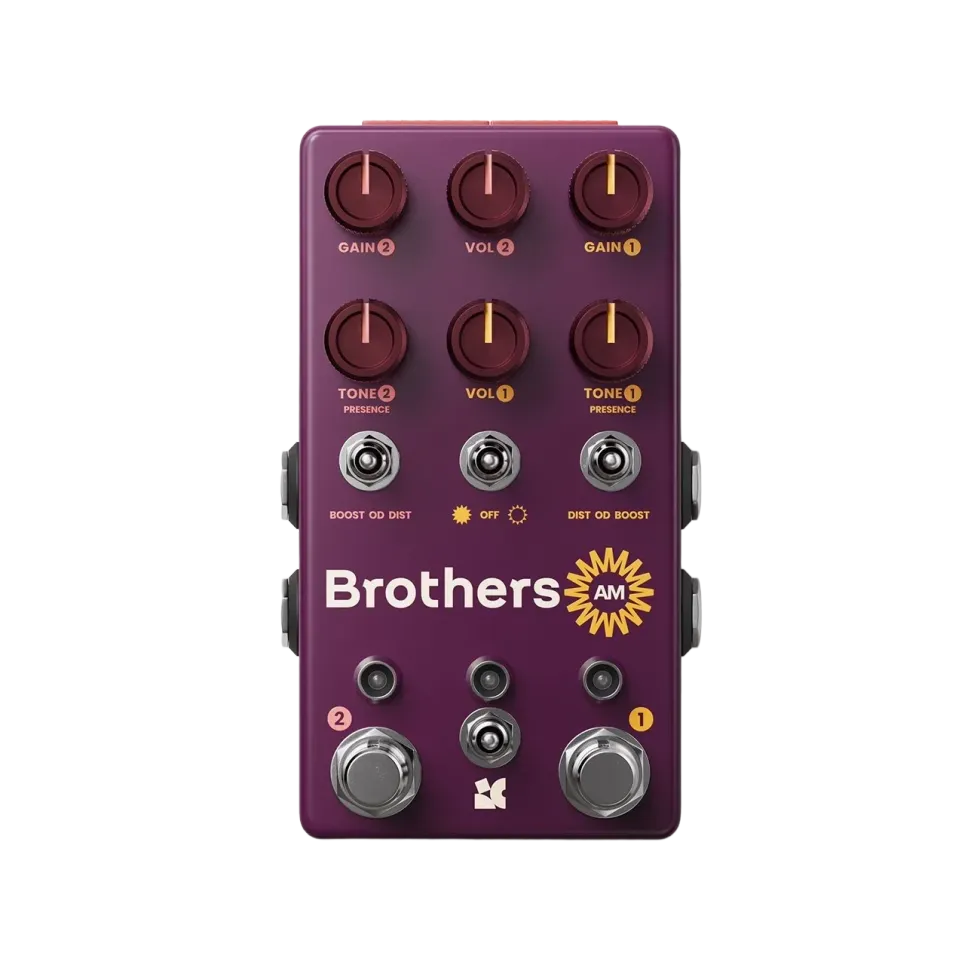
A faithful tribute to the Analog Man King of Tone, the Brothers AM offers dual multi‑mode gain channels—boost, overdrive, or distortion—with intuitive controls, live tweakability, and four onboard custom presets. It adds a bonus treble‑booster circuit inspired by the Beano Boost, giving you extra bite and clarity. Fully MIDI, expression, and CV‑controllable, this pedal lets you save tones and stack effects while preserving the warm, transparent character of the original.
$399 street
KEELEY Manis Overdrive
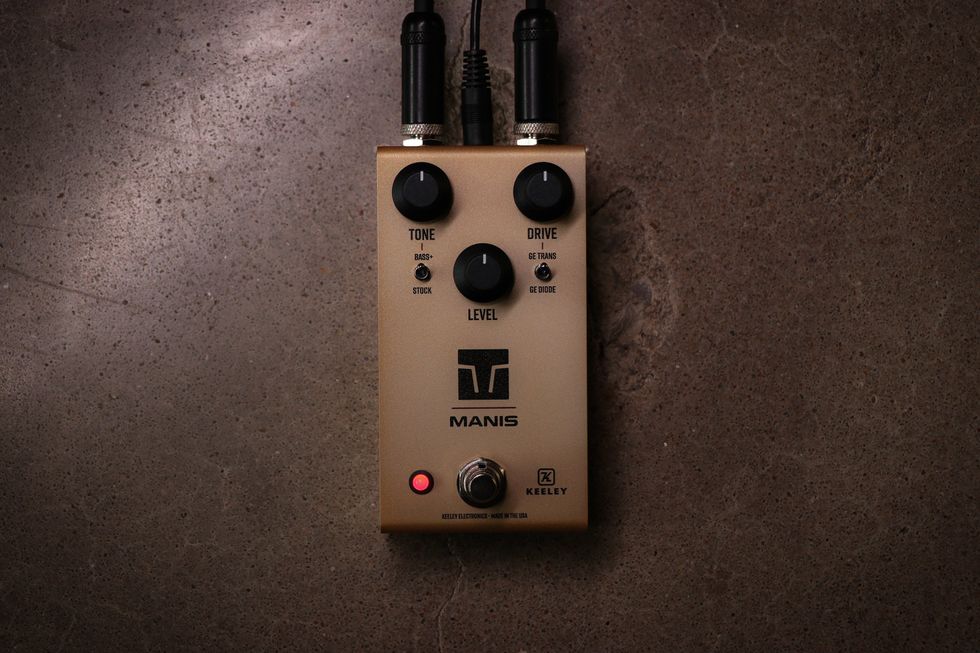
The Keeley MANIS Overdrive is a bold evolution of the mythical transparent drive, blending NOS germanium transistors and diodes for unmatched warmth, compression, and grit. With switchable voicings and dynamic touch response, it’s a tone-sculpting weapon built for players who demand both clarity and rich harmonic character in one pedal.
$199 street
EVENTIDE H90 Harmonizer
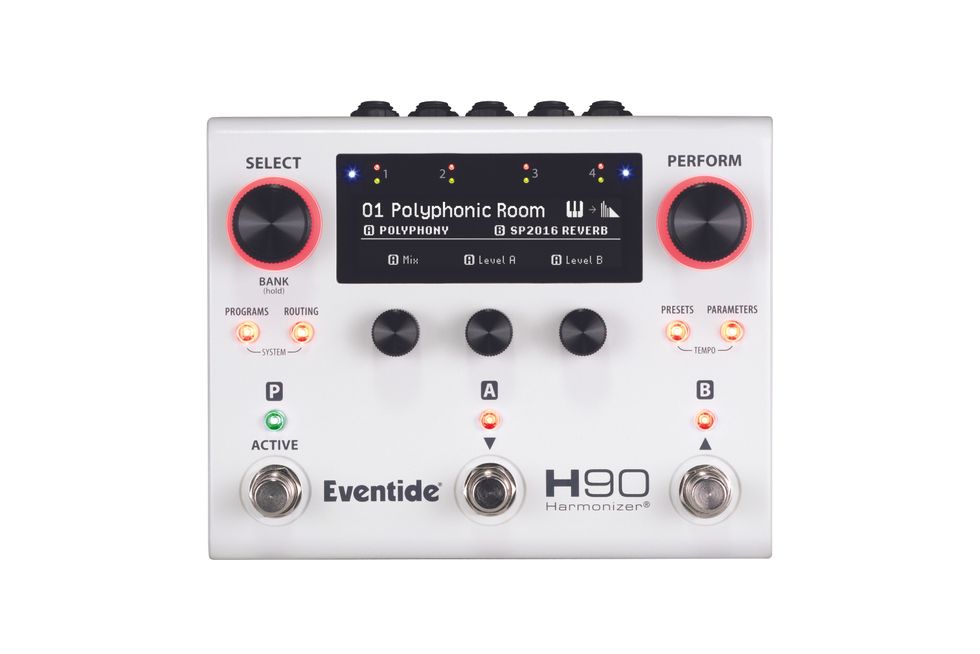
Eventide’s flagship H90 Harmonizer is a powerhouse multi-effects pedal. It features 70 effect algorithms, including reverb, delay, pitch shifting, modulation, and distortion, plus hundreds of curated programs. With comprehensive I/O and flexible routing, the H90 is built to be the heart of your rig, on stage or in the studio.
$899 street
NUX Amp Academy Stomp
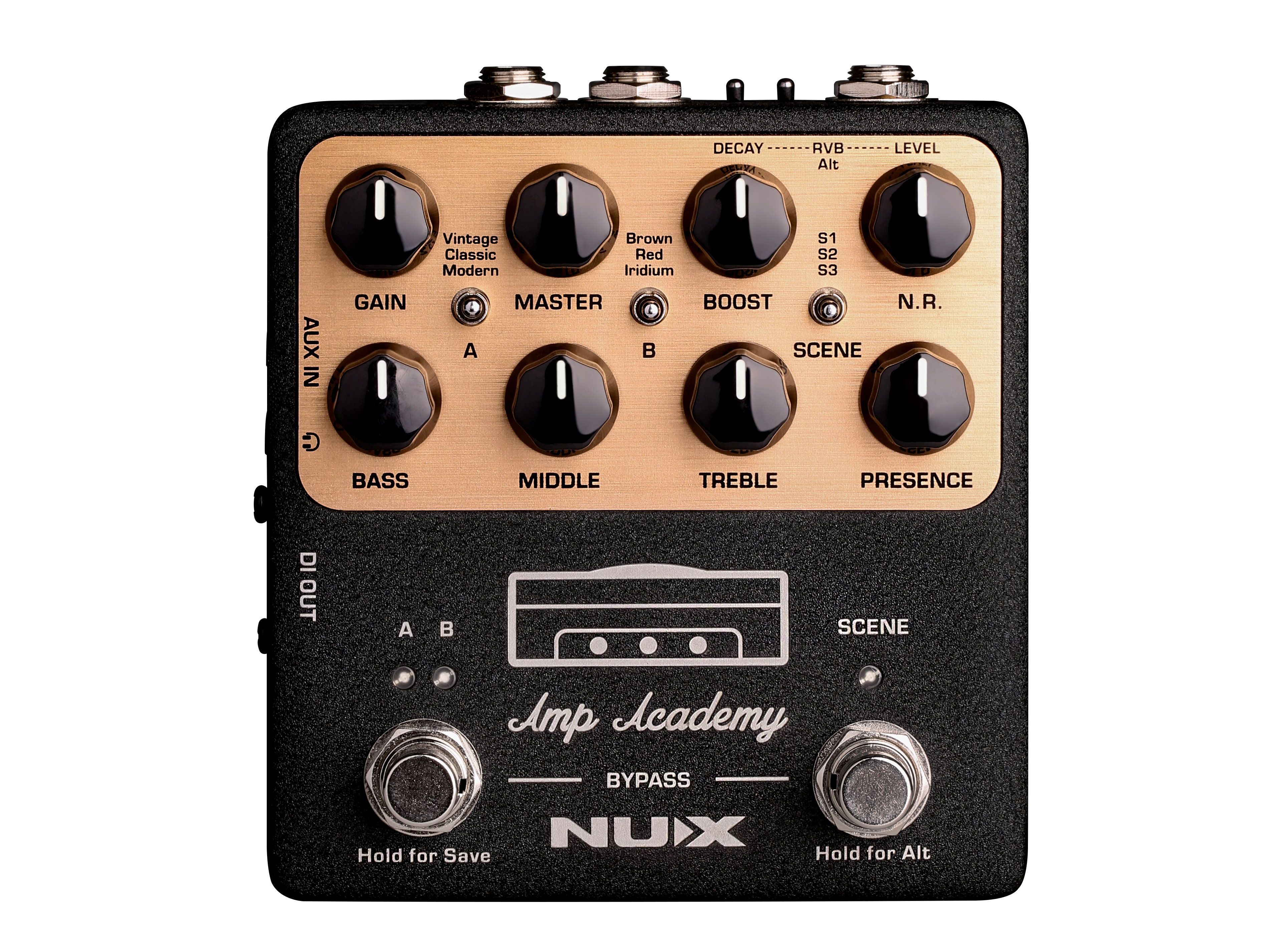
The Amp Academy Stomp is the latest in amp modeling from NUX. Included are several legacy amps, effects, Bluetooth with an app, workflow features, and more. Most importantly, the Amp Academy Stomp includes Image, which loads NAM profiles into the Amp Academy Stomp and, with black-box algorithms, accurately reproduces the dynamics and responsiveness of any amp profile loaded into the pedal.
$299 street
NOBELS CHO-mini
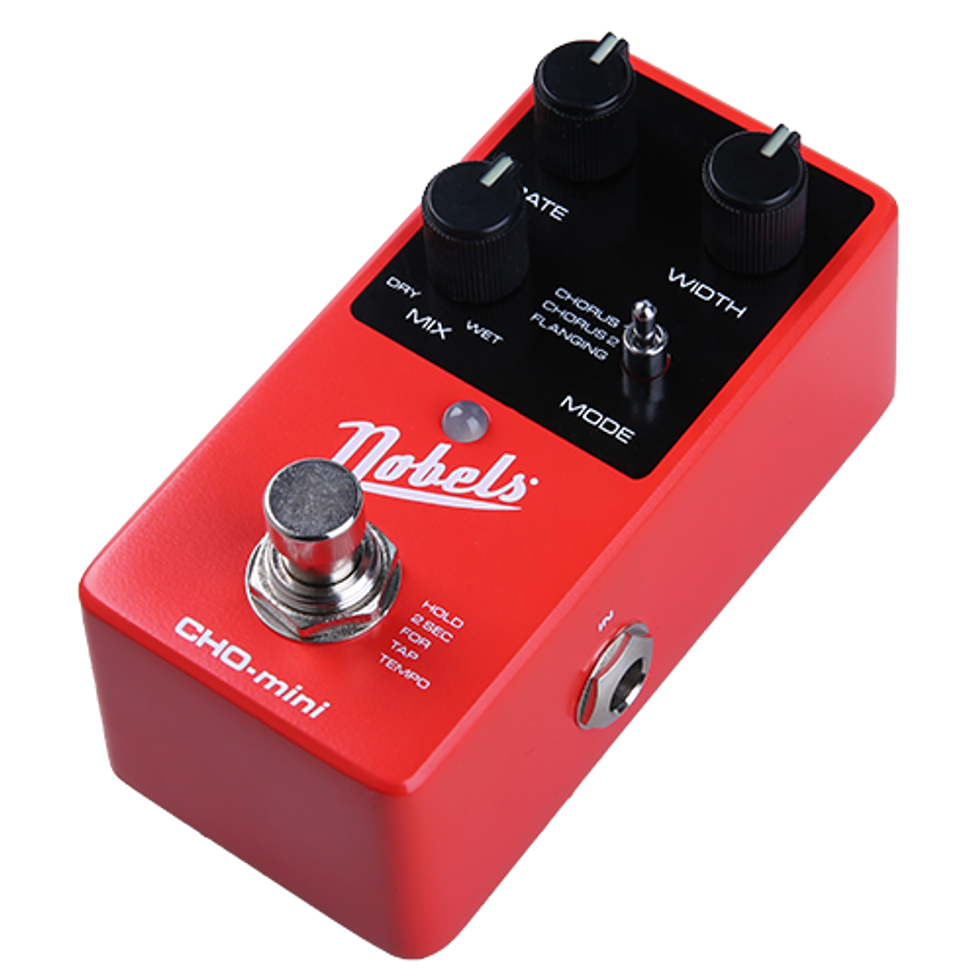
The pocket-sized and feature-packed CHO-mini pedal delivers an outstanding selection of chorus tones at a budget-friendly price. With a selection of three curated and timeless chorus effects, the CHO-mini delivers a wealth of sonic possibilities in mono or spacious stereo imaging. Includes tap-tempo, true or buffered bypass, metal housing. Available from Osiamo.
$99 street
FUHRMAN Echoes
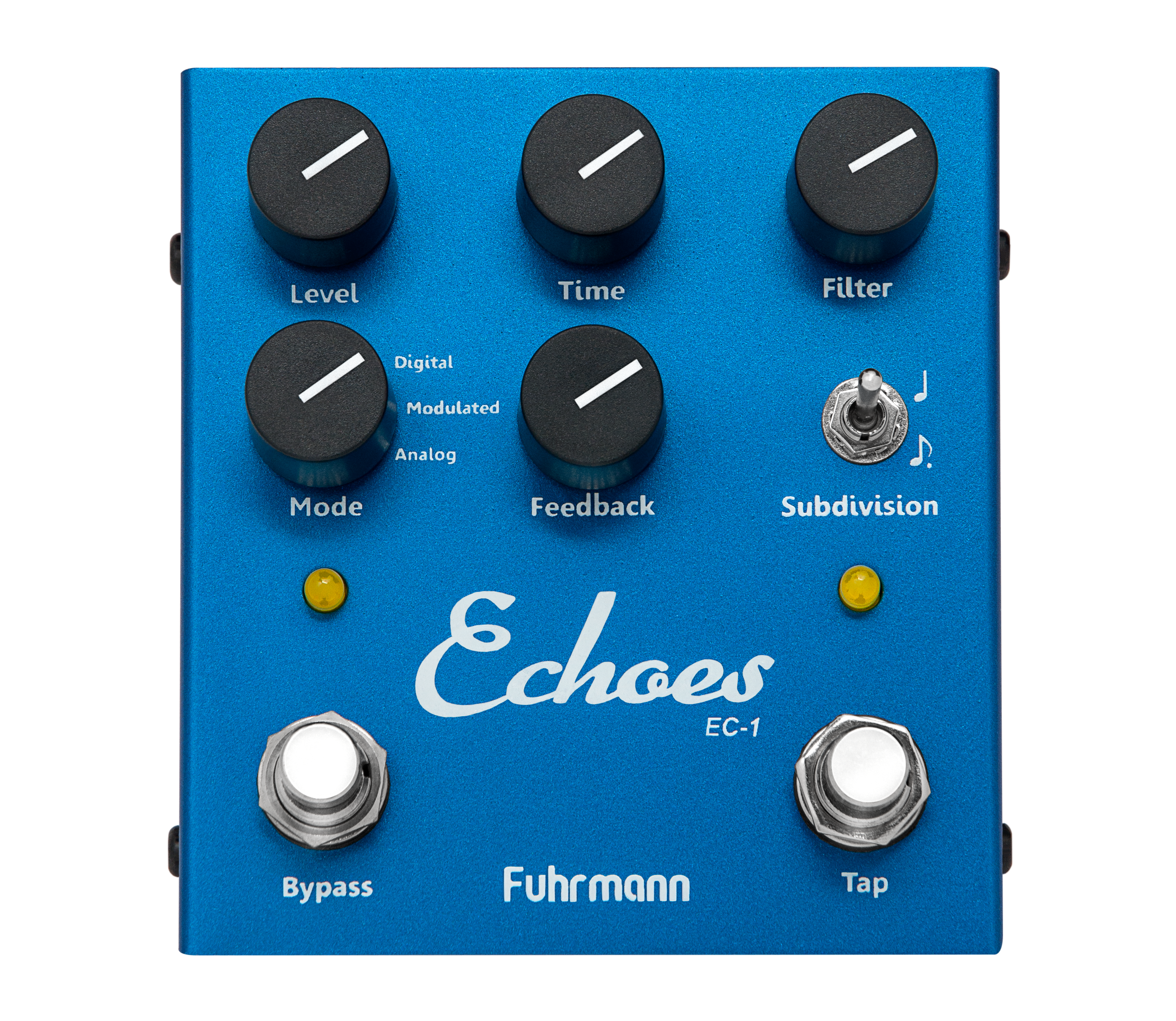
The Fuhrmann Echoes pedal is a versatile delay unit, offering digital, modulated, and analog modes. It provides clear, modulated, or degrading (analog-like) delay repetitions, adjustable with a low-pass-filter control. Featuring tap tempo and two rhythmic subdivisions, this compact pedal delivers up when one delay is not enough.
$180 street
NOISE ENGINEERING Batverb
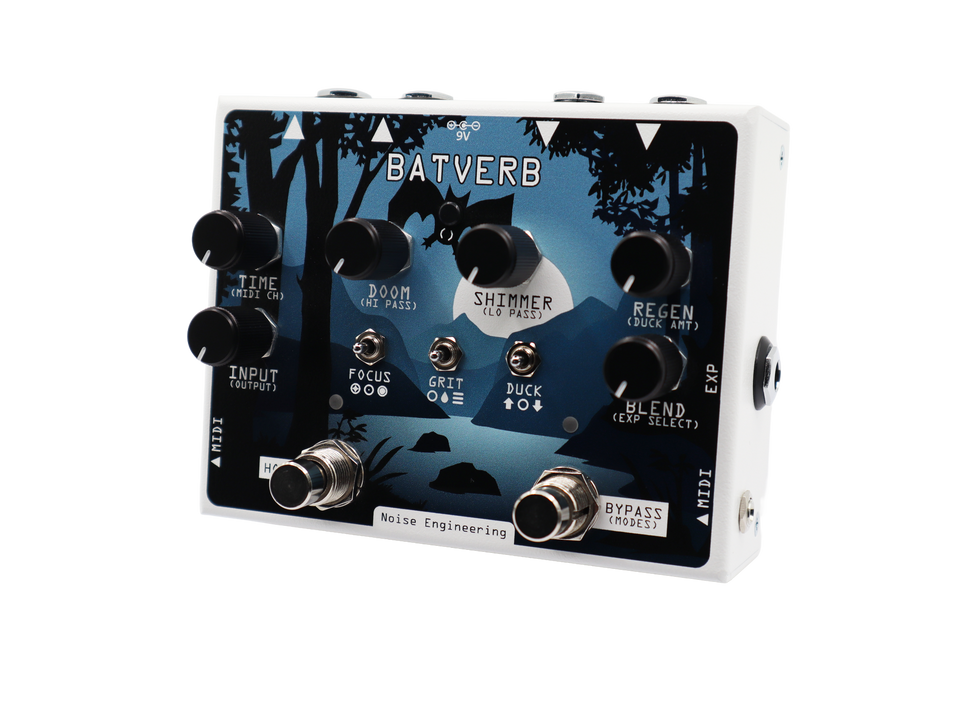
Batverb is the stereo reverb that dreams are made of. Less of a room simulator and more of a tail-generating pedal, Batverb is an instrument in its own right. Batverb sings in any signal chain, with dedicated controls for suboctaves and overtones, saturation, ducking behavior, and more.
$499 street
HOTONE Ampero II
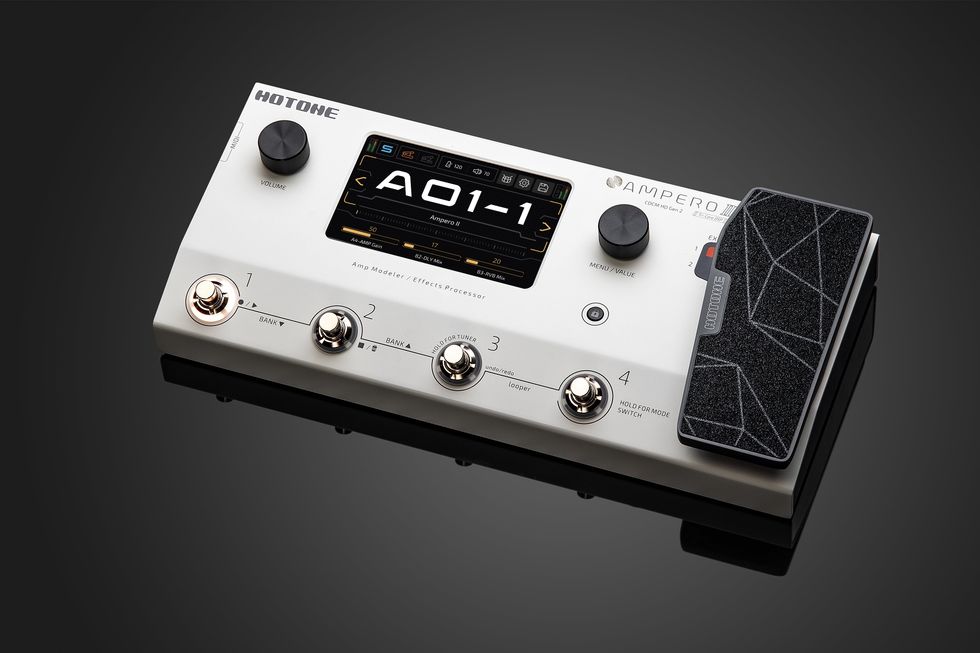
The Ampero II is the latest addition to the Ampero series, a second-generation multi-effects processor that brilliantly combines the iconic stage control of the original Ampero with the power of a new triple-core digital audio processing platform. Plus, a larger, sharper 5-inch dynamic touchscreen and newly designed system UI for smoother, and more intuitive interaction. All while maintaining the compact and lightweight design of the Ampero Series.
$599 street
FUHRMAN Stellar Stereo Reverb

The Fuhrmann Stellar Stereo Reverb pedal delivers a broad range of reverbs, from short early reflections to long, floating tails. Users can seamlessly transition between nine stored reverb scenes with no noticeable delay. Intuitive controls allow for precise adjustments, making it a powerful and user-friendly addition for diverse sonic needs.
$250 street
MR. BLACK DoubleTracker Stereo
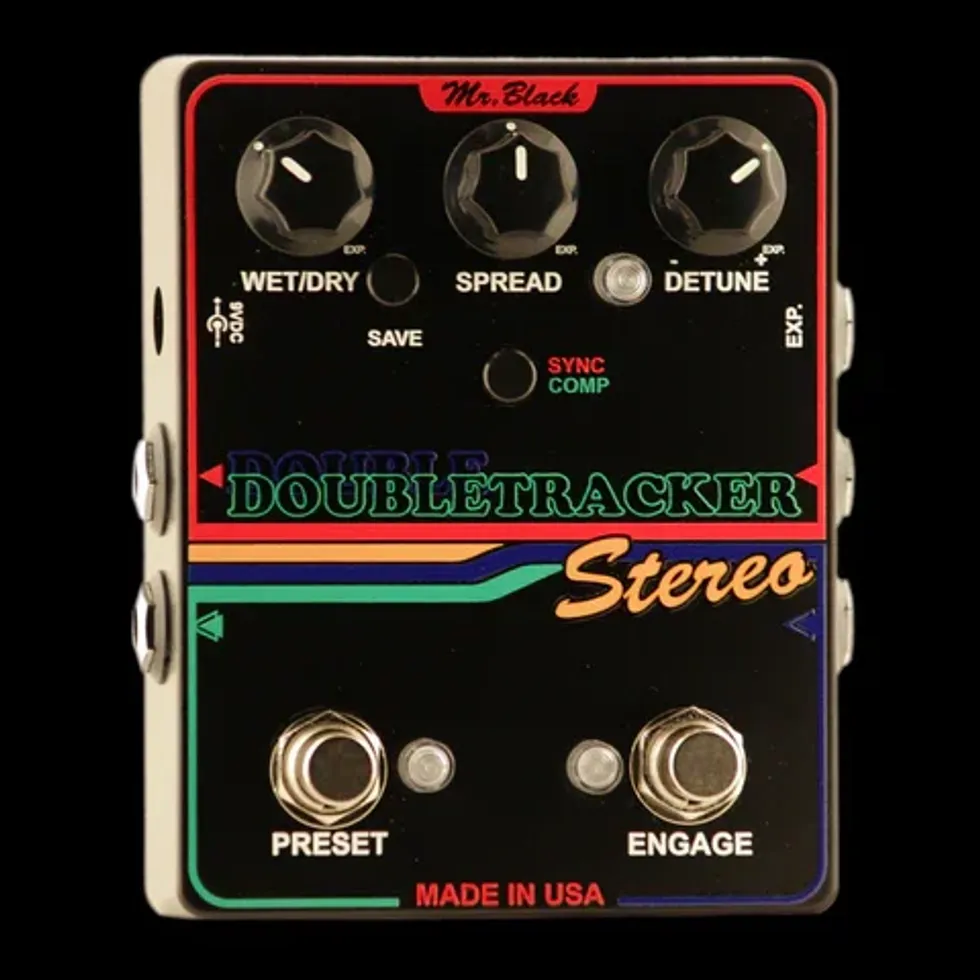
The DoubleTracker Stereo delivers lush, organic stereo doubling with adjustable delay, pitch, and spread. Featuring dual isolated paths, intuitive controls, and unique SYNC/COMP modes, it adds depth and dimension to any instrument—perfect for guitar, bass, keys, vocals, and studio work. It’s not chorus. It’s Double Tracking.
$279 street
ROCK N ROLL RELICS Stinger Overdrive
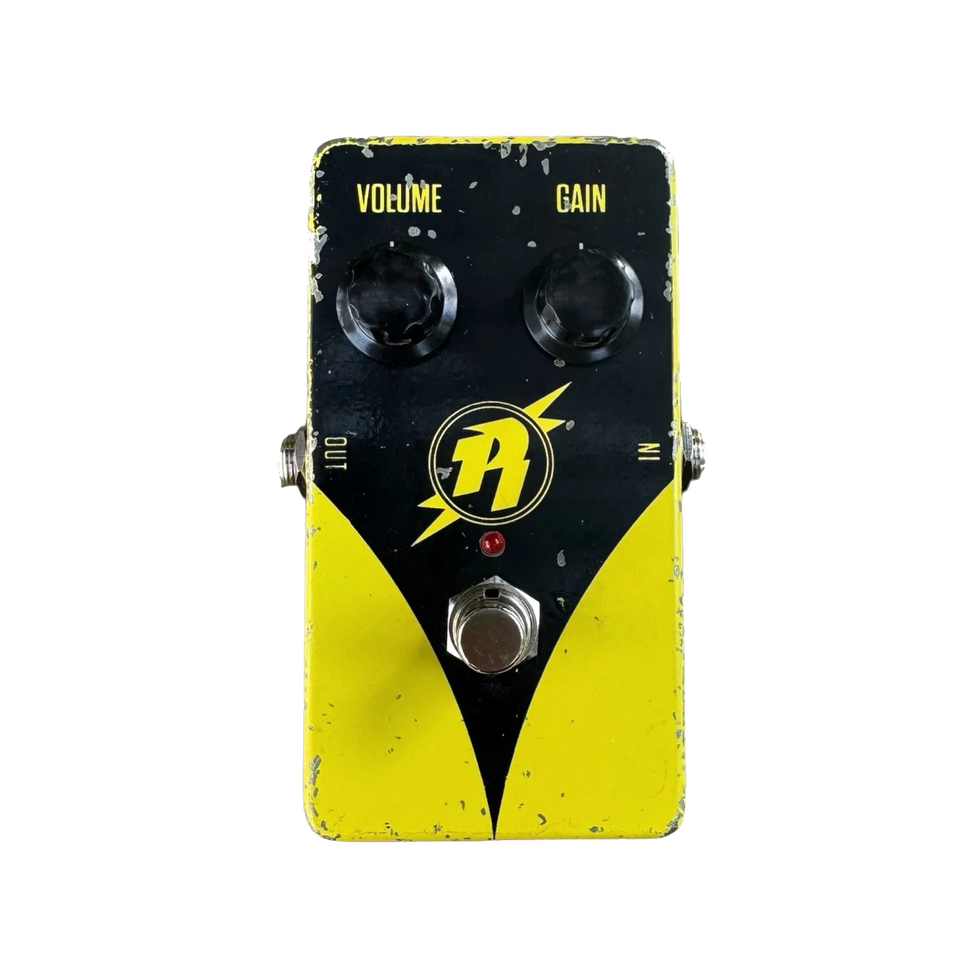
The Rock N Roll Relics Stinger overdrive has all the mojo of classic, yellow drive pedals, but with tonal refinements to bring it to the modern age. We use NOS construction, as you’ll come to expect with the Stinger Series, which gives it that authentic, ear-pleasing tone we all want.
$289 street
EMG Pickups Announces All New E-Series Bass Pickups
EMG Pickups introduces the all-new E-Series lineof active bass pickups. Featuring the commonly used slim soapbar cap design, the E-Series pickups unlock a multitude of bass models for simple, drop-in EMG upgrades.
Unlike any other EMG design, the E-Series pickups feature wide aperture coils withceramic magnets. This potent combination delivers powerful low end while retaining thecutting articulation that the modern bass player requires. Designed with versatility inmind, the E-Series can excel in a wide range of genres and play styles and areavailable in 4, 5, and 6 string sizes. Just like all EMG active pickups, the E-Series arefree from hum and buzz and include solderless wiring kits for DIY installation.
For further tonal shaping, the E-Series pickups are compatible with EMG’s wide rangeof bass EQ’s and accessories, so the possibilities are virtually endless.Unlock the potential of your bass with the EMG E-Series pickups.
Individual E-Series pickups start at $109.00, with sets starting at $209.00.
EMG E4W
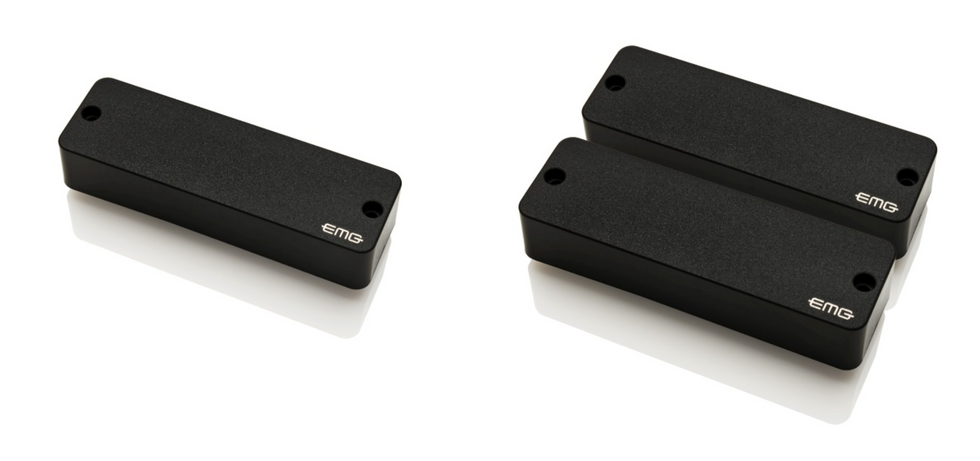
https://www.emgpickups.com/bass/e-series/4-string-e-series.html
EMG E5W
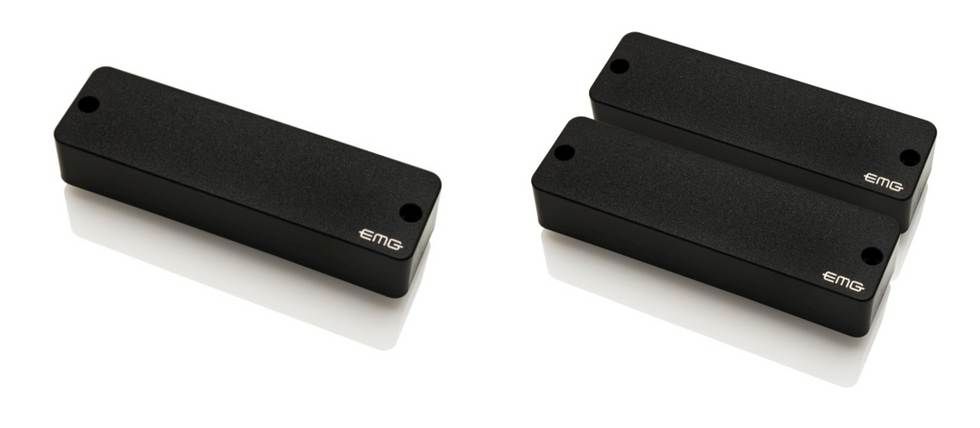
https://www.emgpickups.com/bass/e-series/5-string-e-series.html
EMG E6W
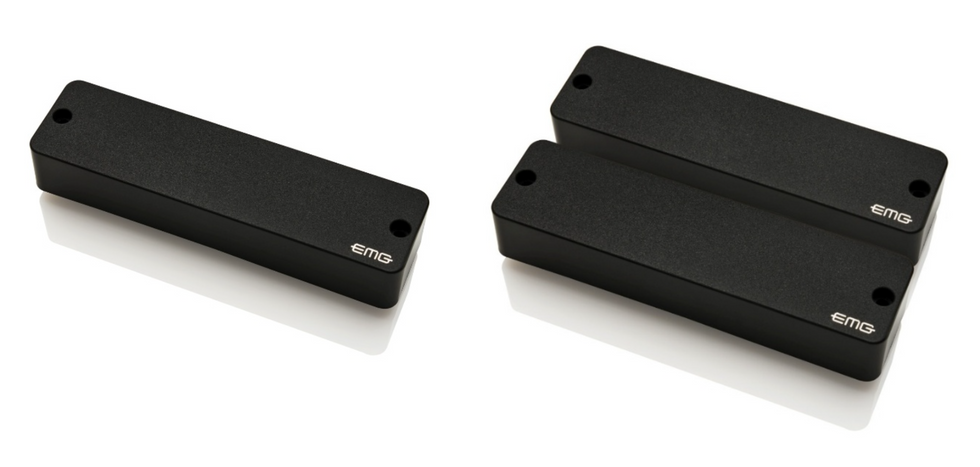
https://www.emgpickups.com/bass/e-series/6-string-e-series.html
Strymon EC-1 Review
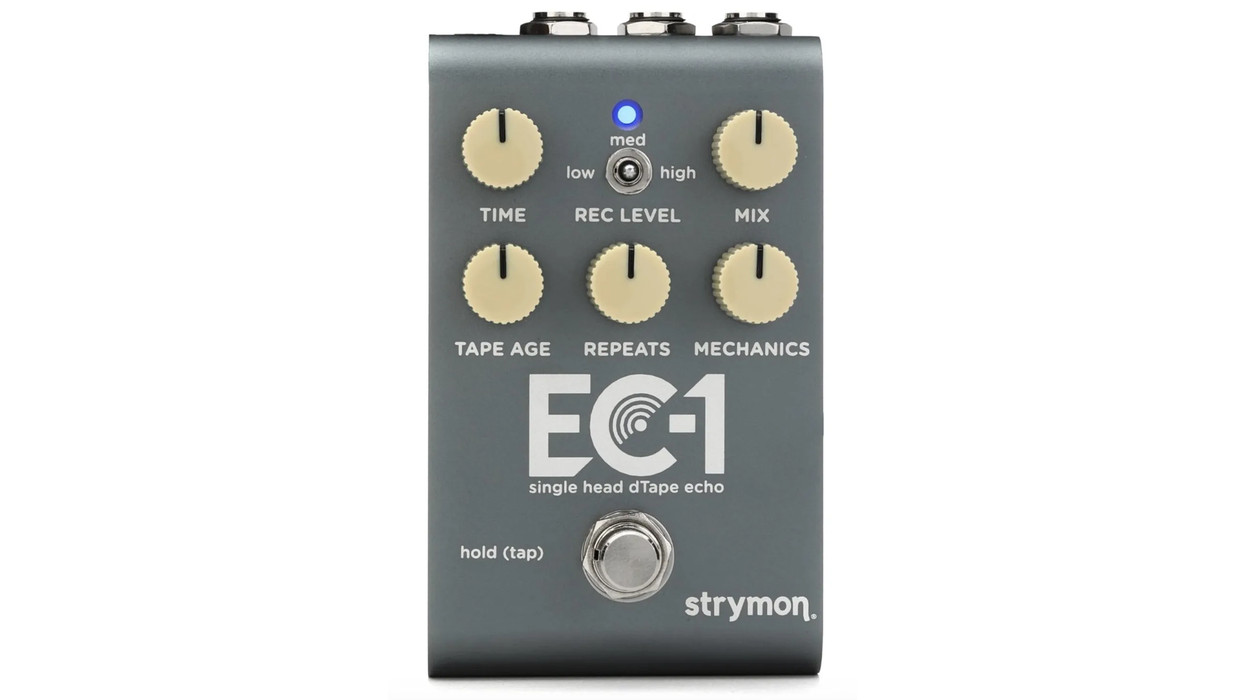
Though they are maligned for their fragility, I’d put the Echoplex tape echo up there among the greatest pieces of musical instrument design. They are totally inspiring tools—certainly in terms of their sound, but also for the mechanical means by which one manipulates and mangles tones. These days, several digital sound designers replicate the Echoplex’s warm, hazy, and mysterious sonic fingerprint with startlingly good results. But just like real fingerprints, the sonic signature of every Echoplex is a little bit different, and one of the most interesting facets of the Strymon EC-1 design is the departure point they used for inspiration.
Rather than emulate the familiar and relatively common solid-state EP-3, Strymon used a tube-preamp-driven EP-2 as a launch pad—except that Strymon’s EP-2 was heavily modified by legendary amp man Cesar Diaz. In Strymon’s estimation, Diaz’ modifications added some characteristics of an EP-3 preamp to the EP-2 formula. In my experience (I’ve played EP-2s and EP-3s side by side and used the latter for comparison in this review) that could mean extra headroom or, in the worst cases, comparative brittleness. Strymon, for their part, says Diaz’ mods resulted in a warmer sort of EP-2 sound. Regardless of their design intent, the EC-1 sounds fantastic in many of the ways a great Echoplex might. The haze and degradation in each repeat sound and behave much like magnetic tape, shaving off high and high-mid spectrum detail as the echoes recede, and adding the dreamy, blurry ambience of a Gerhard Richter painting. But the EC-1 also does sound truly warmer than some of its rivals.
Punch and Foggy
The EC-1 features two preamp modes. The default or “amber” mode emulates the modded preamp Strymon discovered in their EP-2. Somewhat paradoxically for a pedal that excels at simulating tape-signal degradation, it gives the pedal a punchy, airy ambience that can make other delays sound flat and one-dimensional. You can also add up to 6dB of boost, and one thing is certain; at these hotter settings the EC-1 is not a tape-delay emulation that will go missing in an ensemble performance. The second “green” preamp mode emulates a stock EP-2, and while it sounded awesome, it felt a little less fun and dimensional—at least after ripping away with the default mode. Both modes sound great with drive and distortion, however. And in the amber mode, the extra detail you hear also makes it feel more sensitive to picking and input dynamics.
As is obligatory in most Echoplex emulations, the EC-1 offers excellent approximations of tape warble, tape wear, and recording input level effects. There is also stereo and MIDI functionality. In terms of price, the EC-1 inhabits an interesting position in a market full of top-performing Echoplex emulators. At $279, it’s $120 less than Universal Audio’s feature-rich Starlight Echo Station, $100 less than Strymon’s own El Capistan, and 80 bucks less than the Catalinbread Belle Epoch Deluxe. There are also excellent options in less expensive ranges, like the standard Belle Epoch ($209), Dunlop’s Echoplex pedal ($199), and UA’s Orion ($169). Though some of them offer more in terms of options and versatility, I’m not sure any of them can better the sounds of the EC-1. And certainly, the EC-1’s default mode offers a unique and exciting twist on EP-2 sounds that, while not vintage-correct in a technical sense, may offer more utility as a delay than the most perfectly executed Echoplex ever could.
Adam Miller Rig Rundown
The prolific Australian guitarist brought his mastery to east Nashville, where we got a look at the gear he’s trusting overseas.
Adam Miller has been compared to plenty of his most sacred influences—Tommy Emmanuel, Chet Atkins, Charlie Hunter, Bill Frissell—but he’s certainly carved a path of his own. This year alone, he’s released three records and undertook a U.S. tour to bring his delightful mix of jazz, groove, and beyond to eager listeners.
Before his show at the Underdog in east Nashville, Miller took some time to show PG’s Chris Kies around his trusted tools for international touring, including a gorgeous custom Huber electric, a Collings acoustic, and some key items on loan.
Calling a Huber
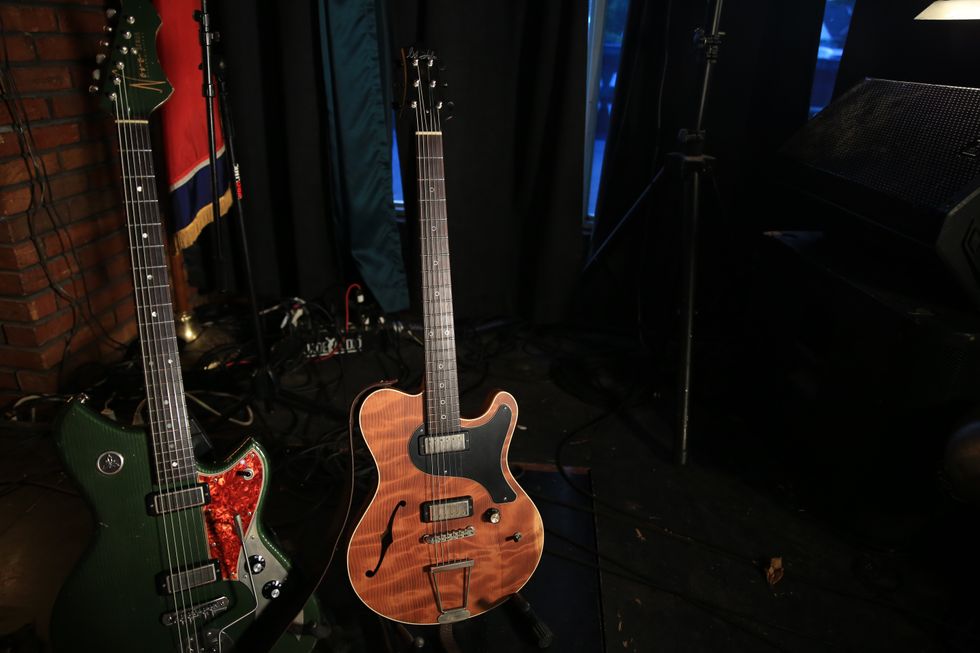
This custom-built Huber electric, by German luthier Nik Huber, was crafted over the last five years, working in elements of Miller’s previous Huber and several other designs. It has a heavily chambered mahogany back and redwood top, bolt-on maple neck, rosewood fretboard, trapeze tailpiece, and nylon saddles, plus Kloppmann Electrics mini humbuckers and a single 250k volume pot, which rolls off for a jazzy archtop sound. Miller strings it with D’Addario NYXLs (.011–.049s).
Borrowed Bari
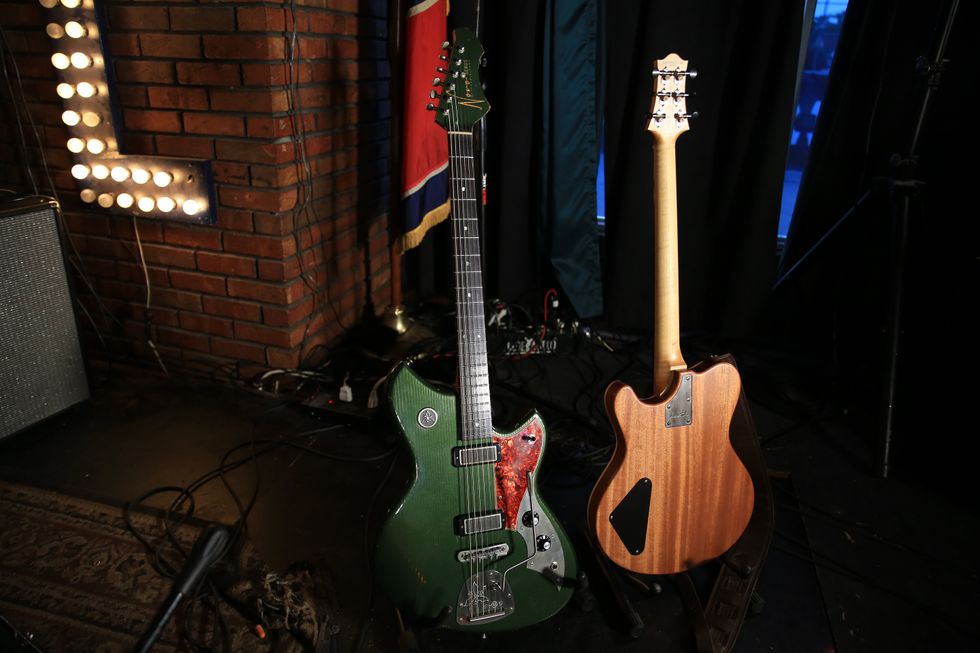
Since Miller can’t bring all his favorite instruments on tour, he often borrows guitars from local friends and fans on tour, like this baritone Novo Serus J.
Collings Calling
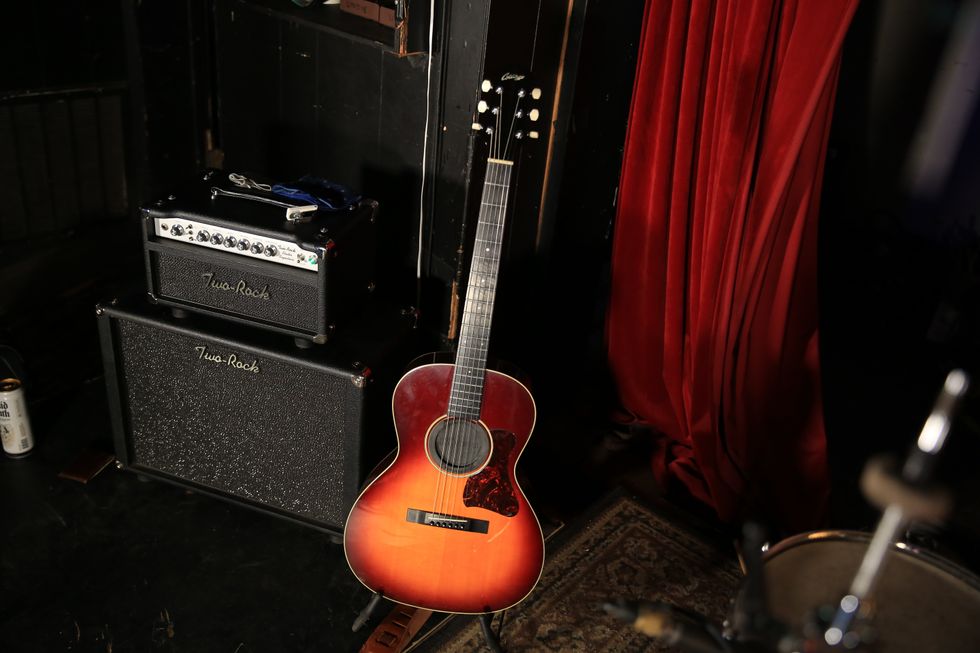
Miller bought this Collings acoustic at Gladesville Guitar Factory, just outside Sydney, about 10 years ago. He runs it with a Seymour Duncan Wavelength duo pickup system, but swapped out the kit’s undersaddle piece for soundboard transducers and modified “the circuit so they’re at a crossover, so you’re only hearing the bottom end of them and all the top end’s coming from the condenser mic.” He uses D’Addario Nickel Bronze (.012–0.53s) on his acoustic.
Can I Bum a Studio Sig?
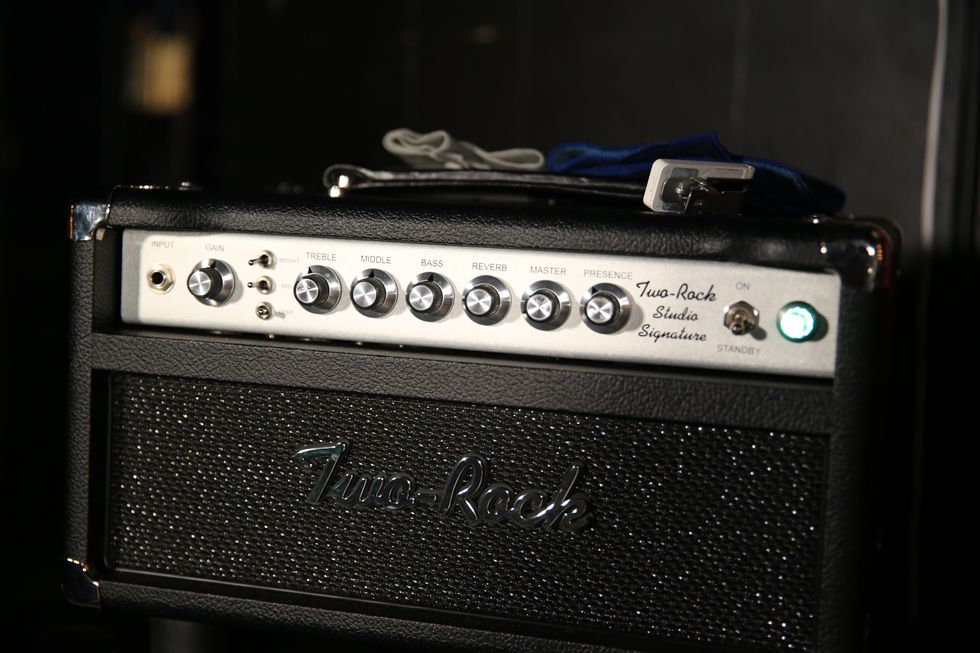
Miller has been a Two-Rock devotee since 2007, and on one of his first trips to the U.S., he visited the factory and picked one up. He doesn’t travel with his unit, so he borrowed this one from Nashville legend Cory Congilio. For Miller, an amp is the soundboard for an electric guitar; if he doesn’t have a Two-Rock, he struggles.
Adam Miller’s Pedalboard
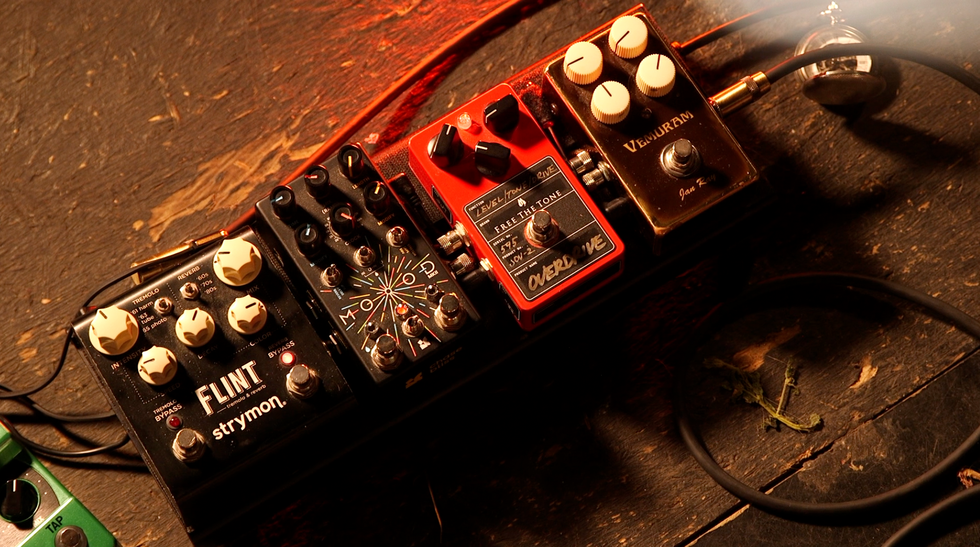
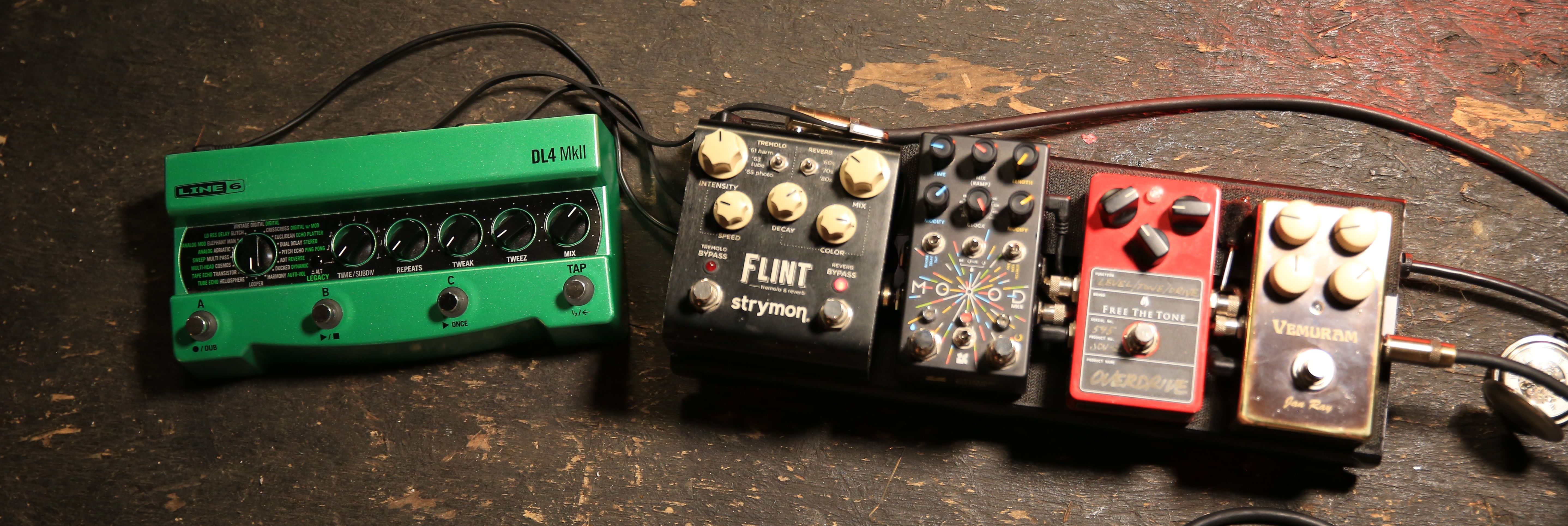 Miller’s Collings runs into a Grace Design ALiX preamp, which helps him fine-tune his EQ and level out pickups with varying output when he switches instruments. For reverb, sometimes he’ll tap the Strymon Flint, but often he’ll let the front of house weave it in.
Miller’s Collings runs into a Grace Design ALiX preamp, which helps him fine-tune his EQ and level out pickups with varying output when he switches instruments. For reverb, sometimes he’ll tap the Strymon Flint, but often he’ll let the front of house weave it in.
Aside from the ALiX and Flint, Miller relies on a Vemuram Jan Ray, Free the Tone SOV-2 Overdrive, Chase Bliss Mood, and Line 6 DL4 Mk II.

Line 6 DL4 MkII Delay Modeler Pedal

